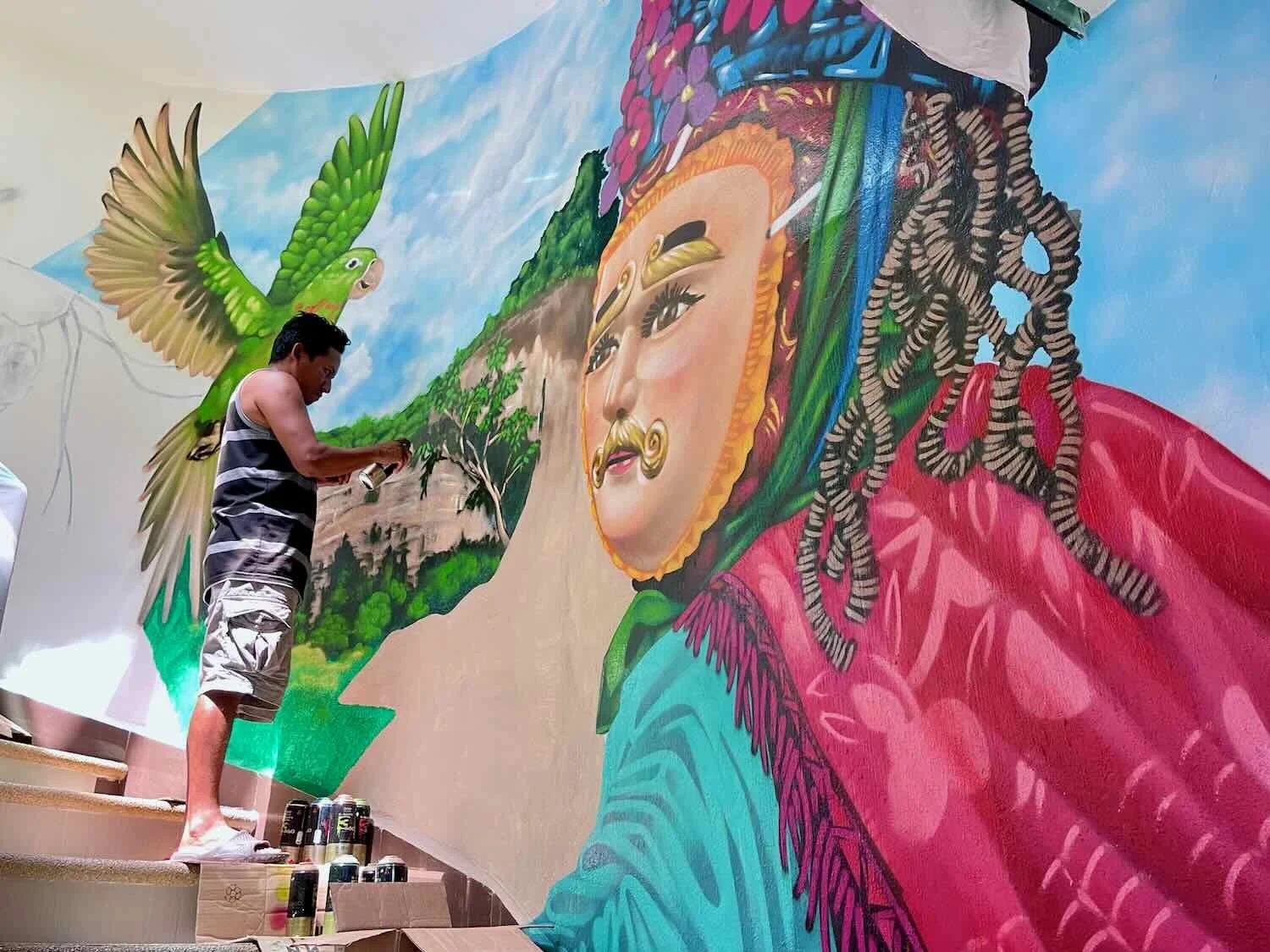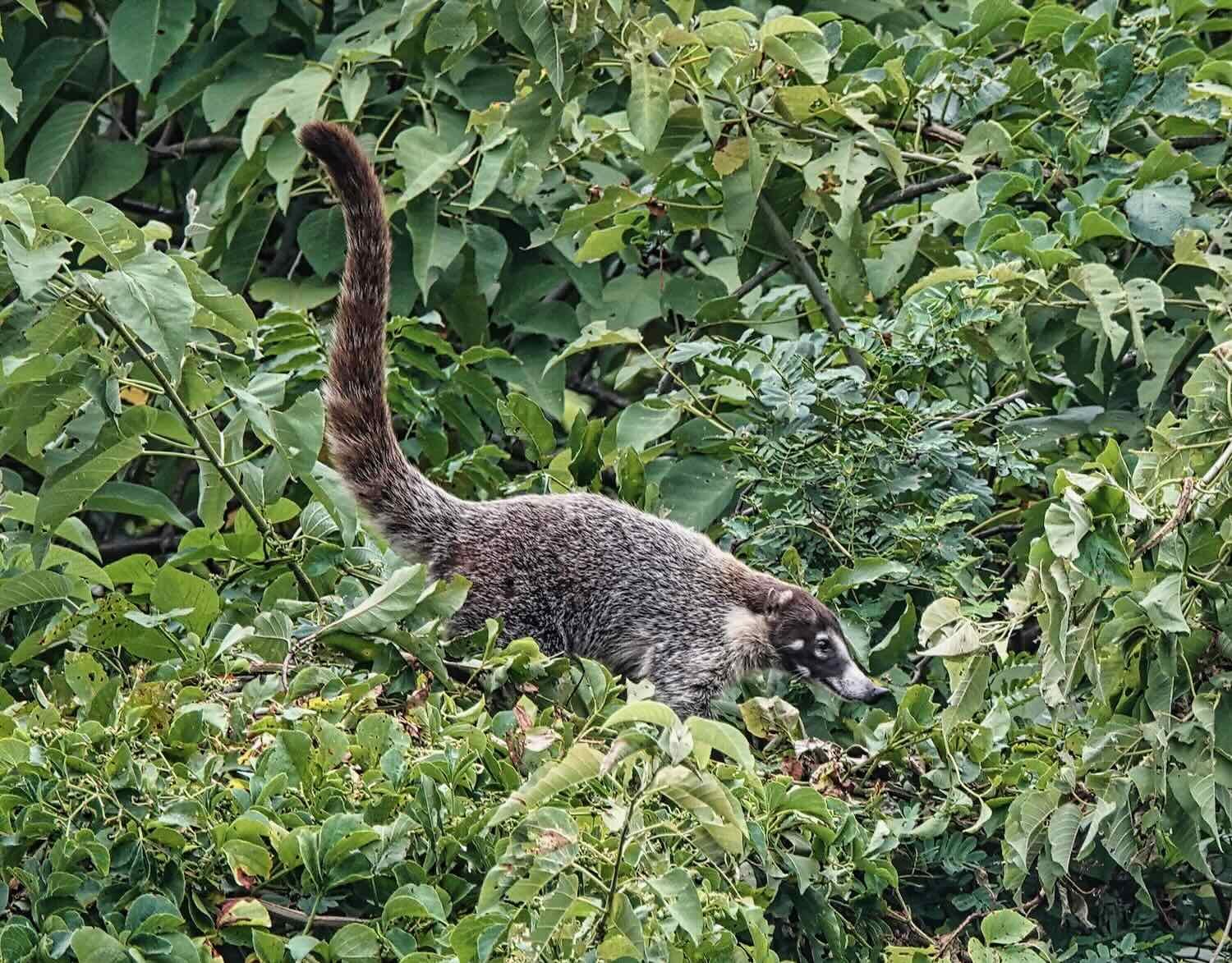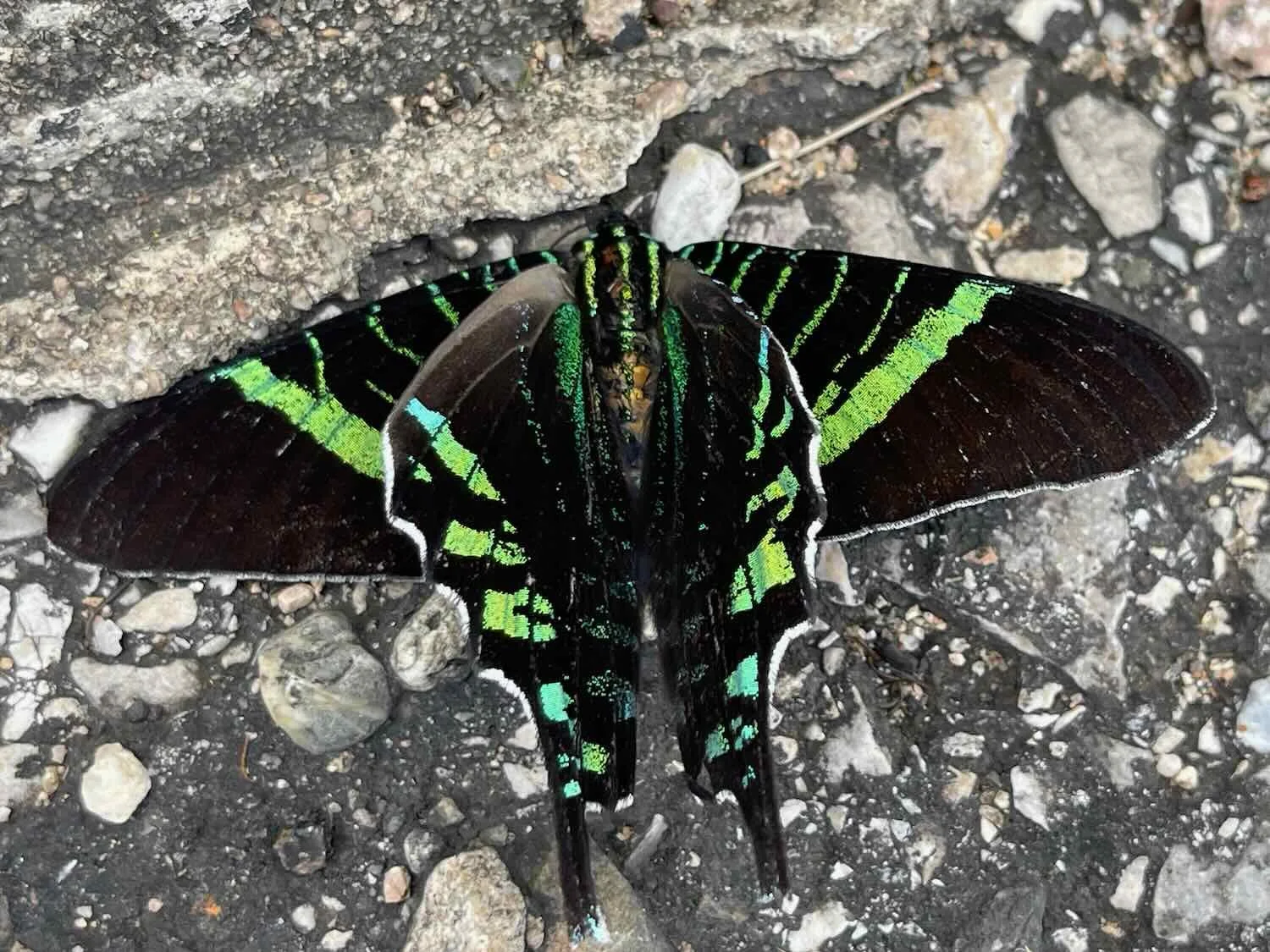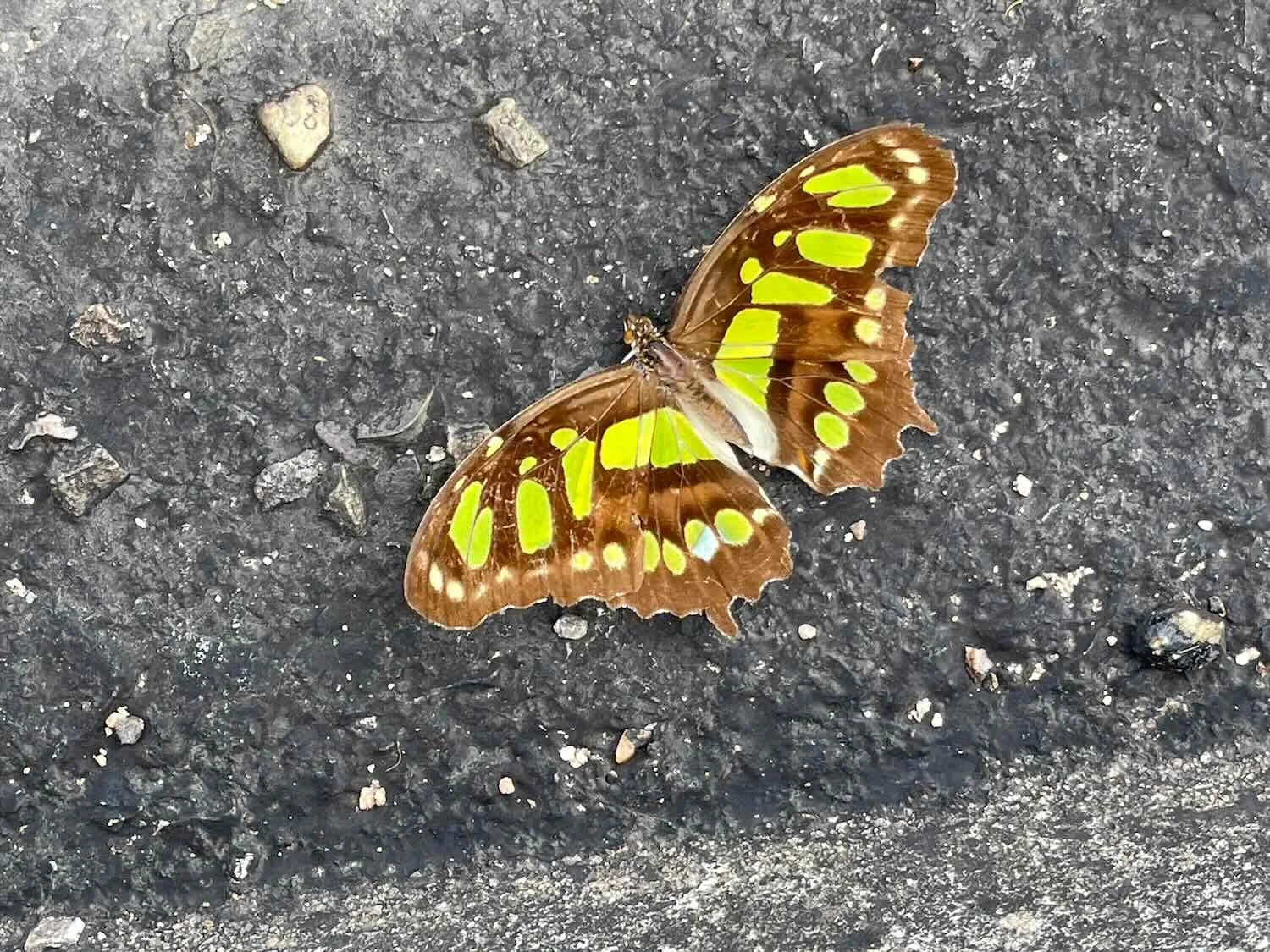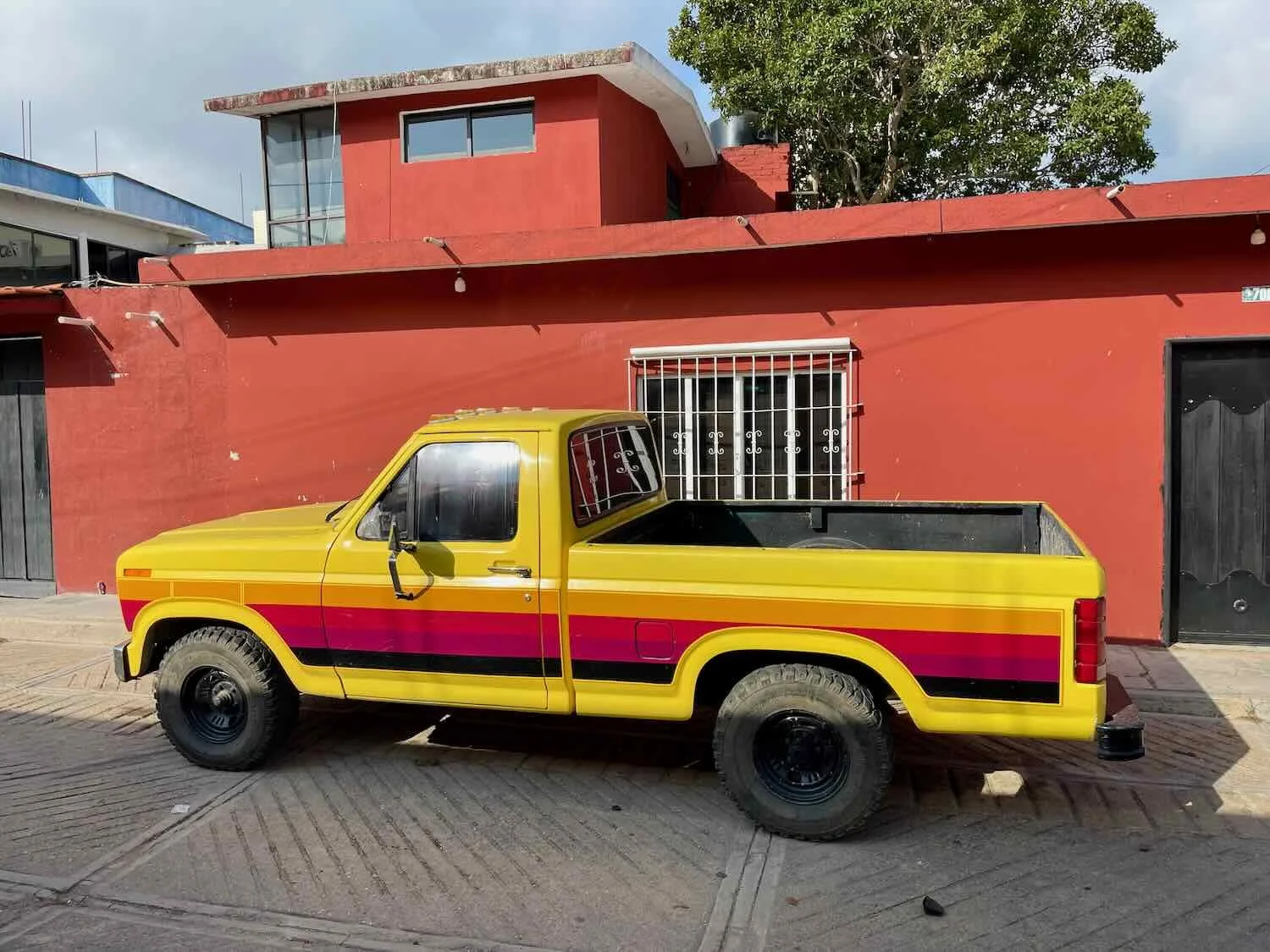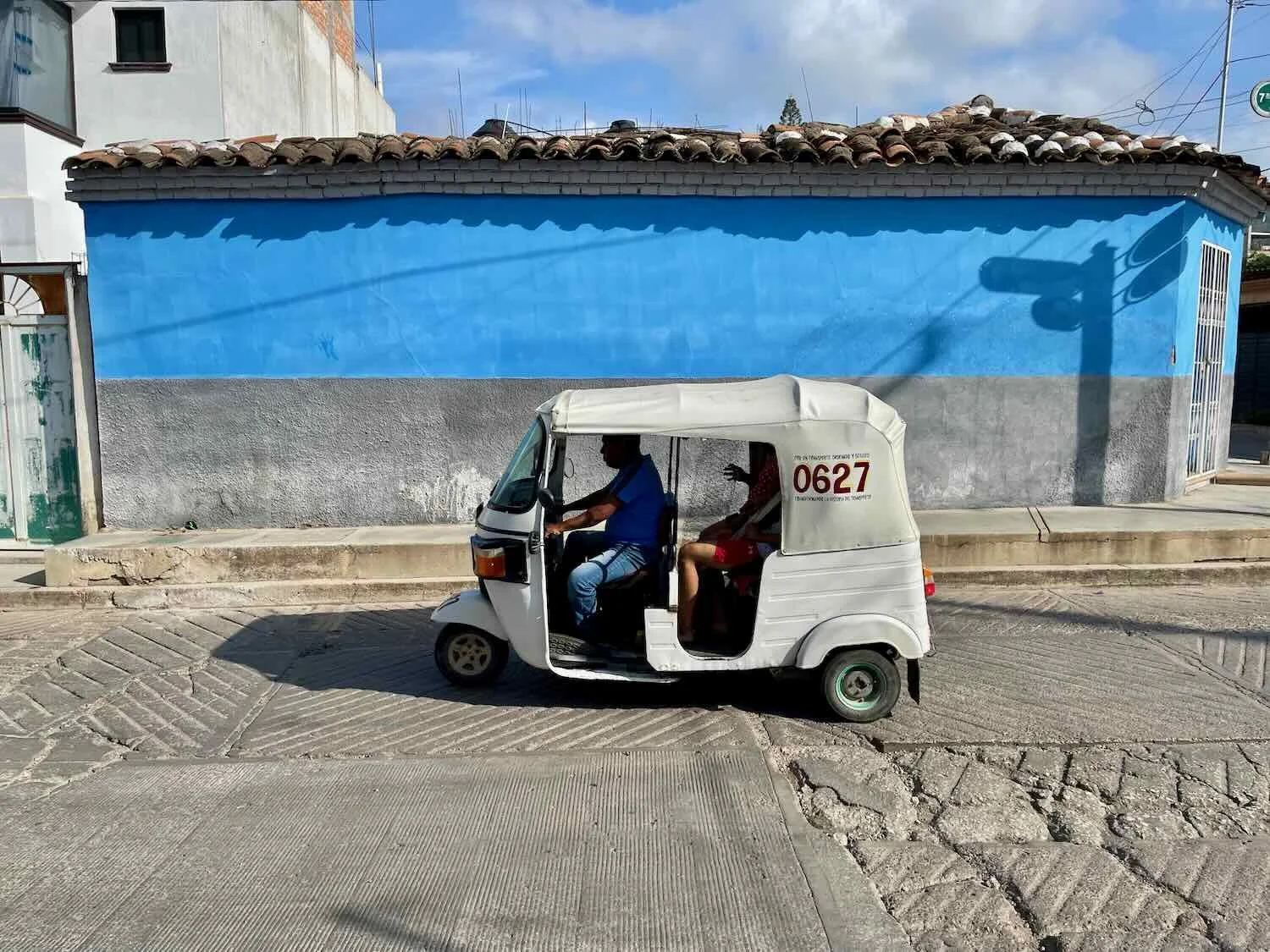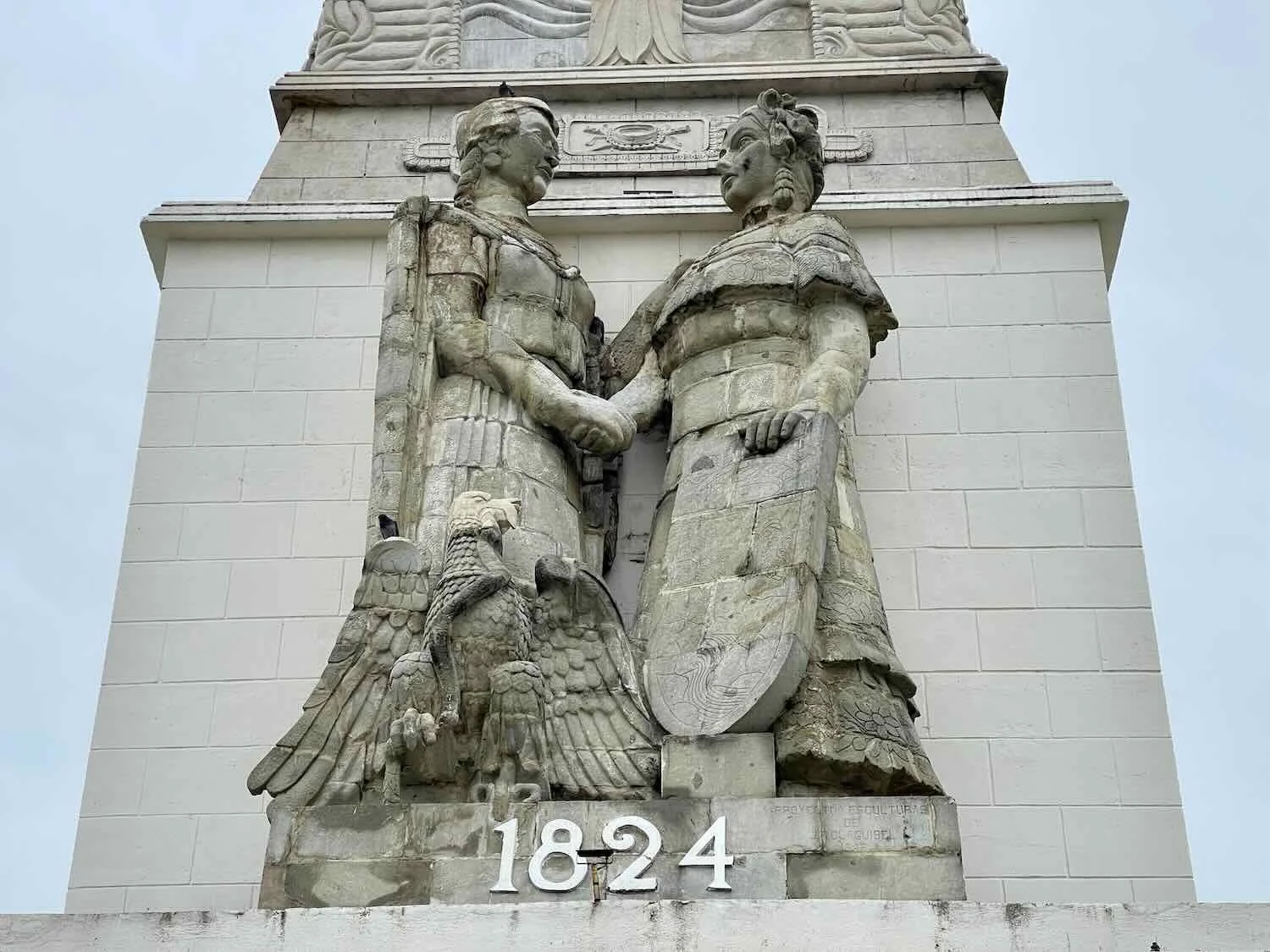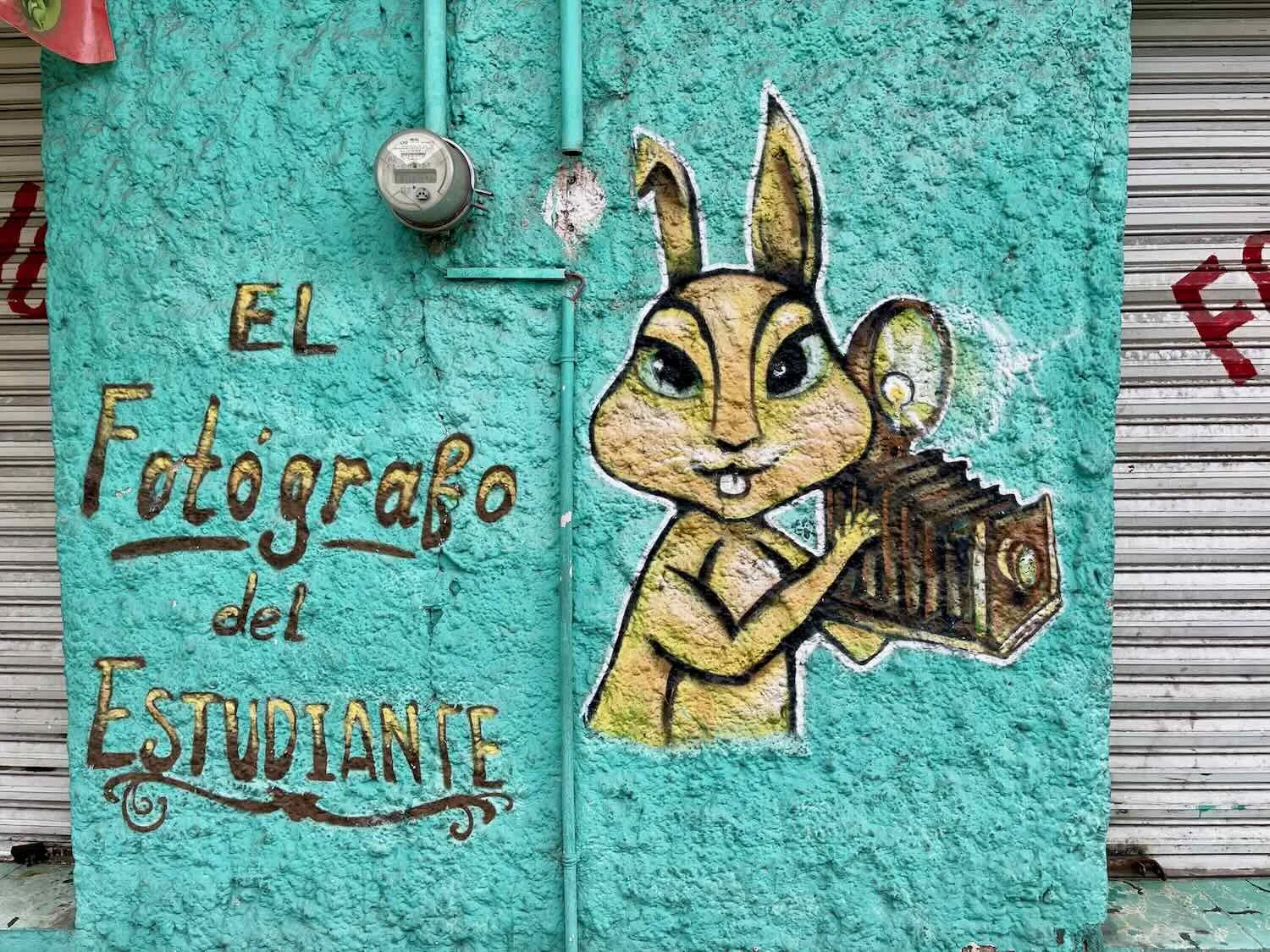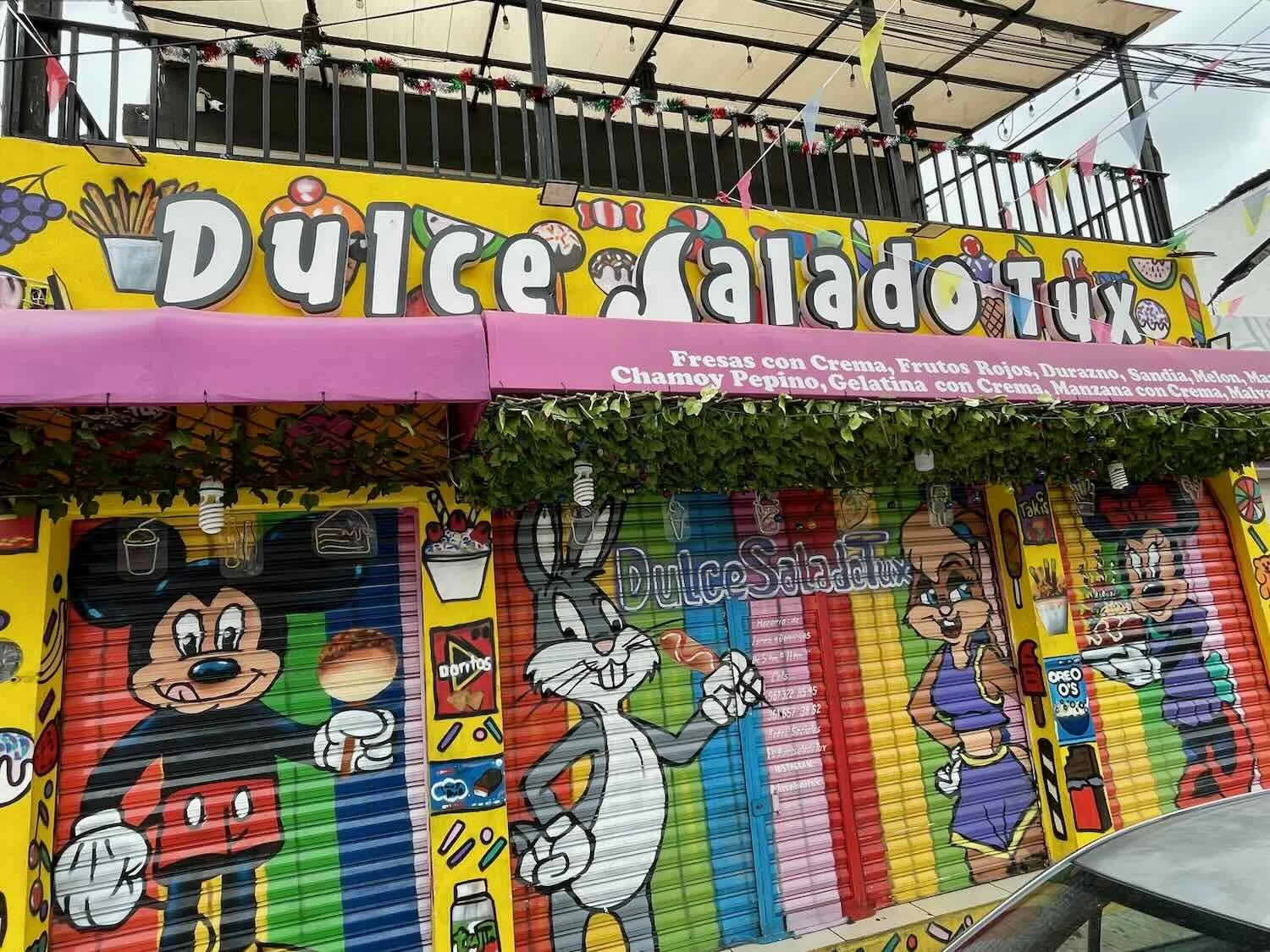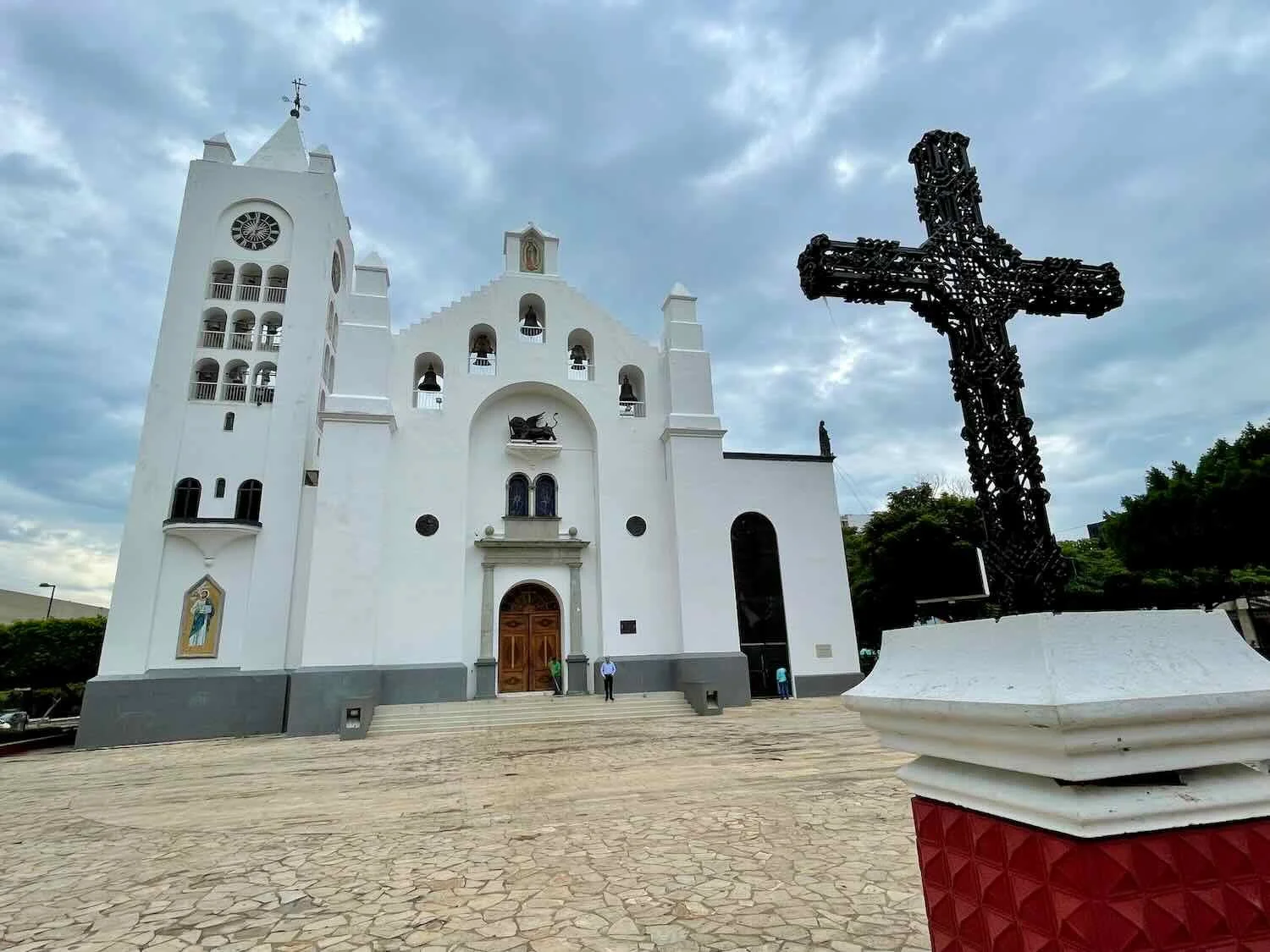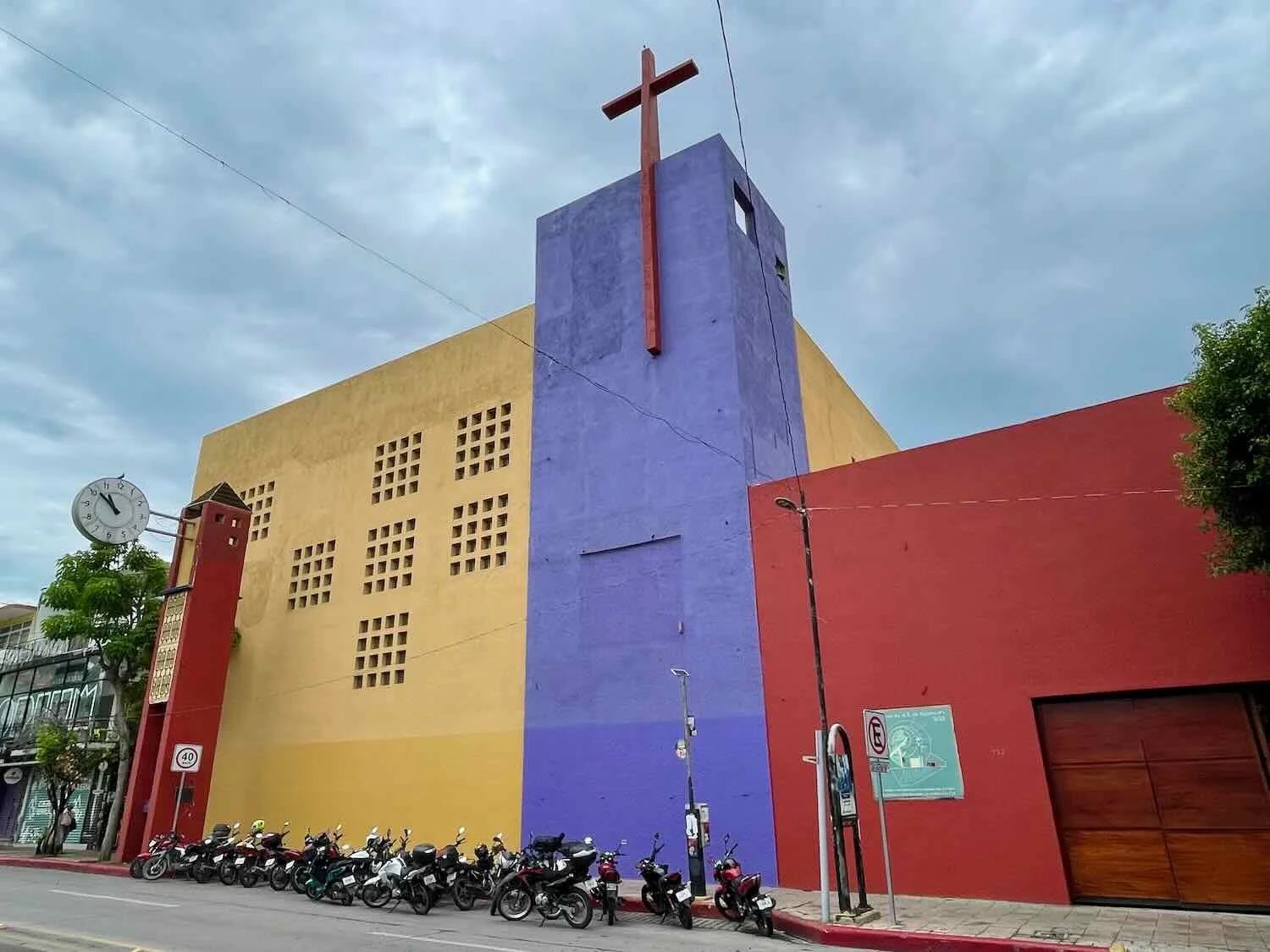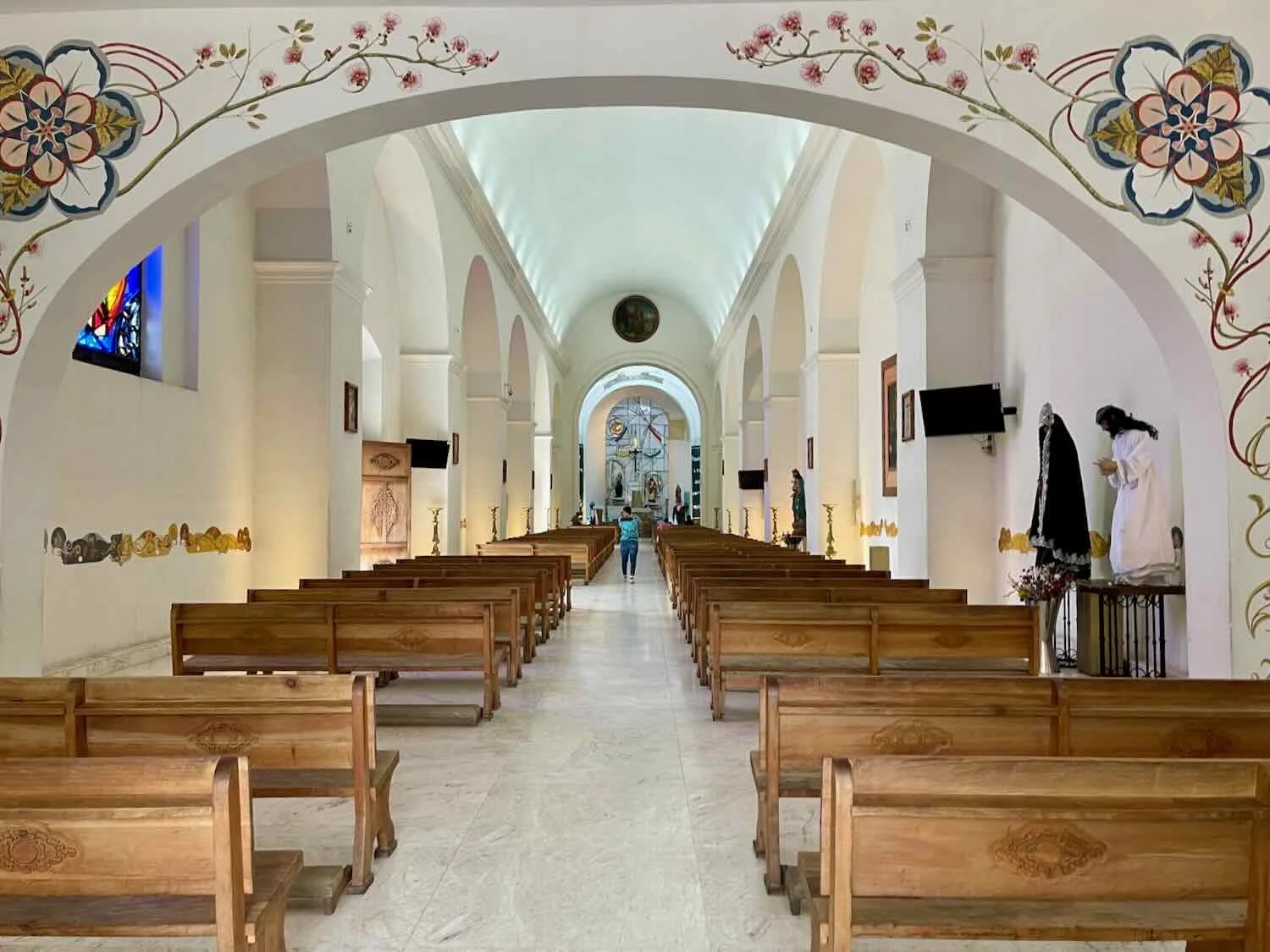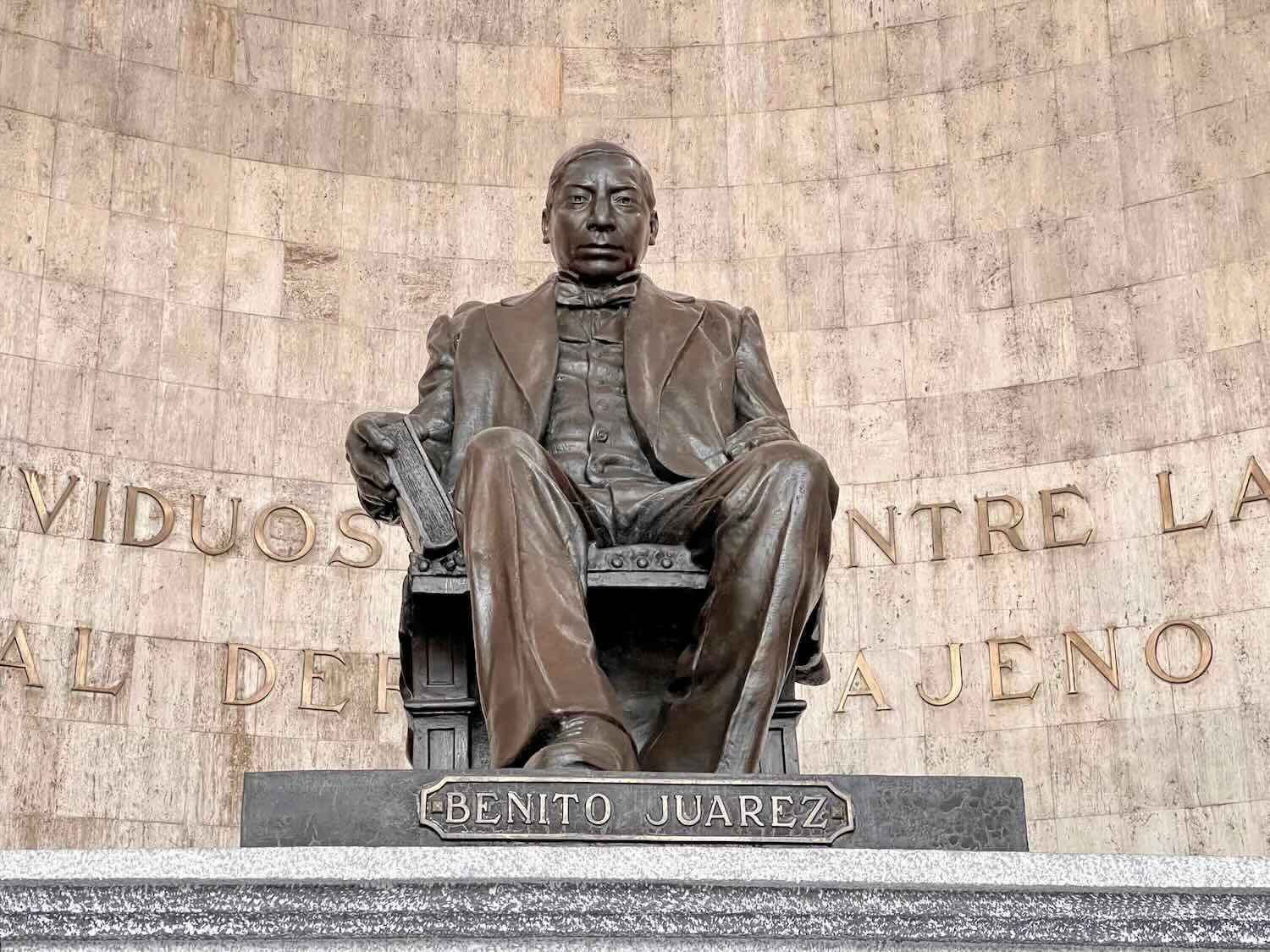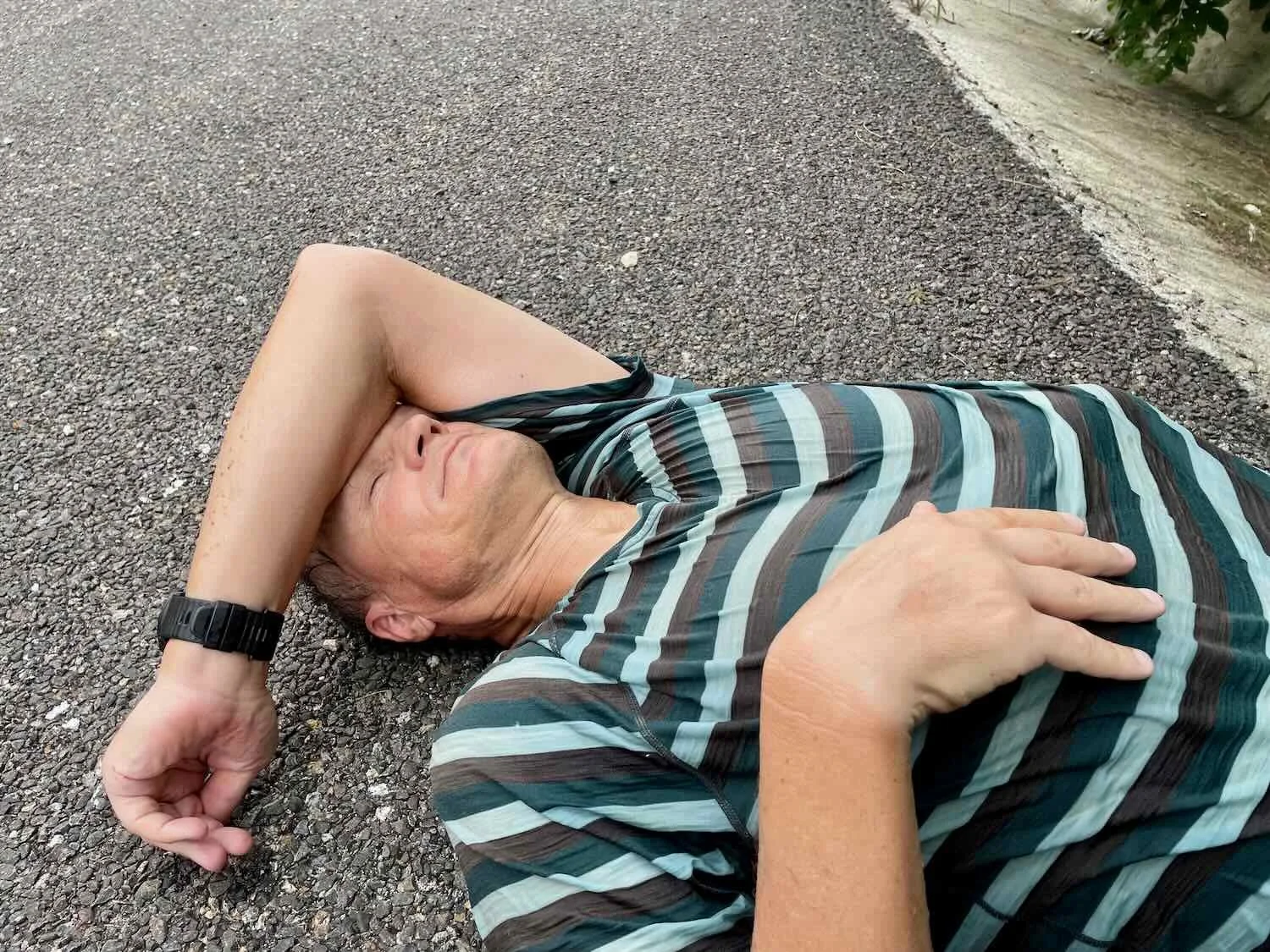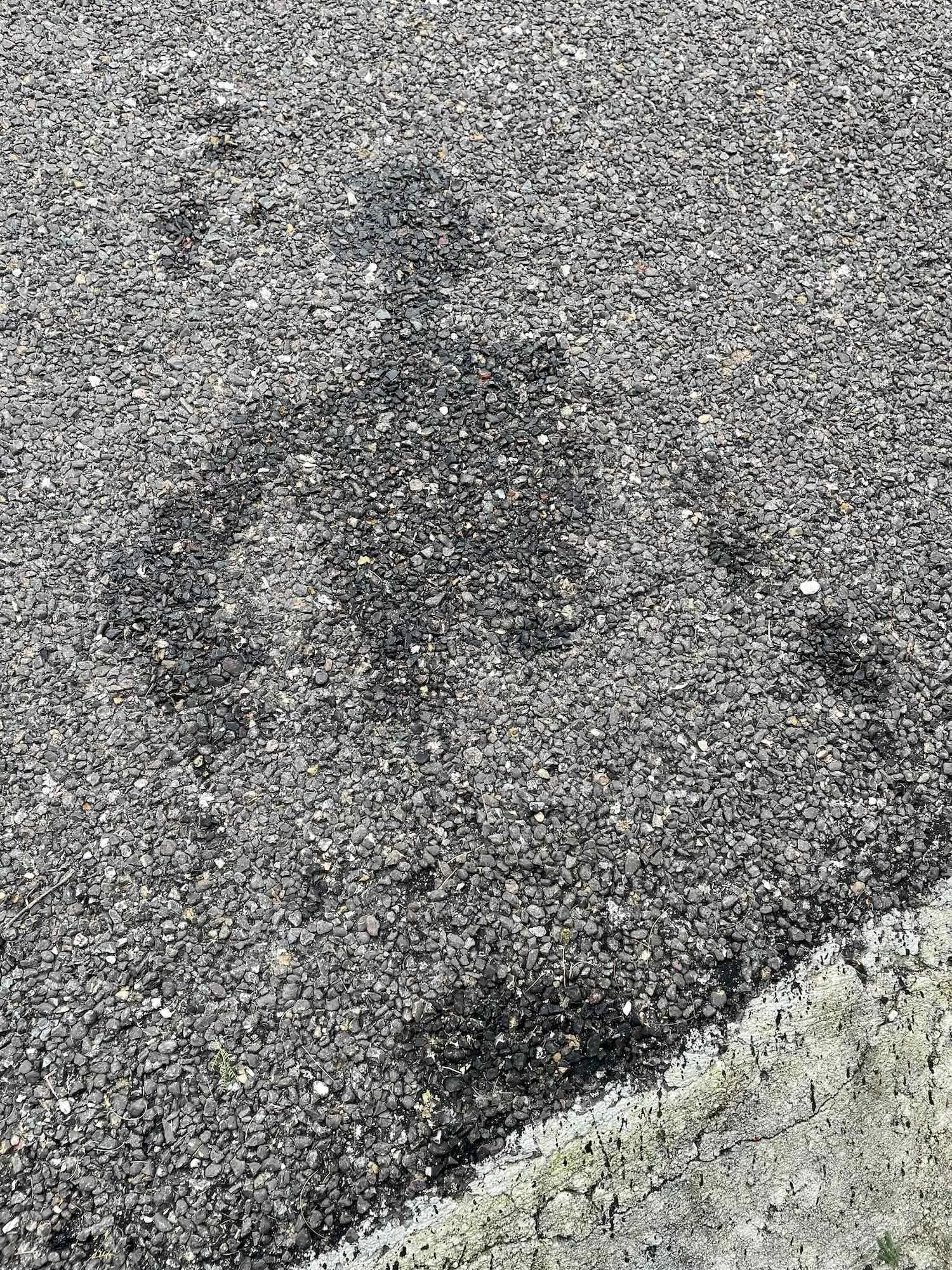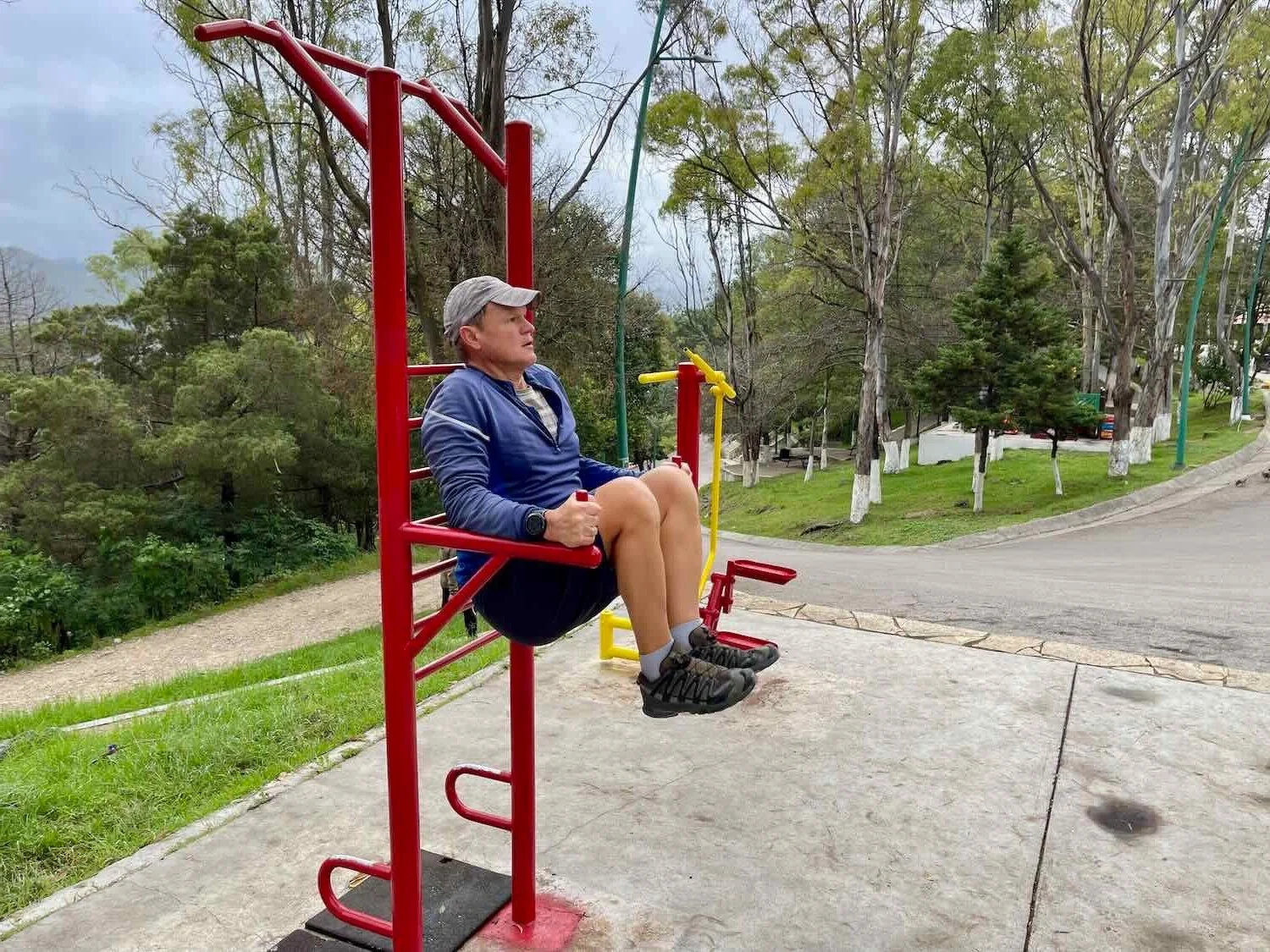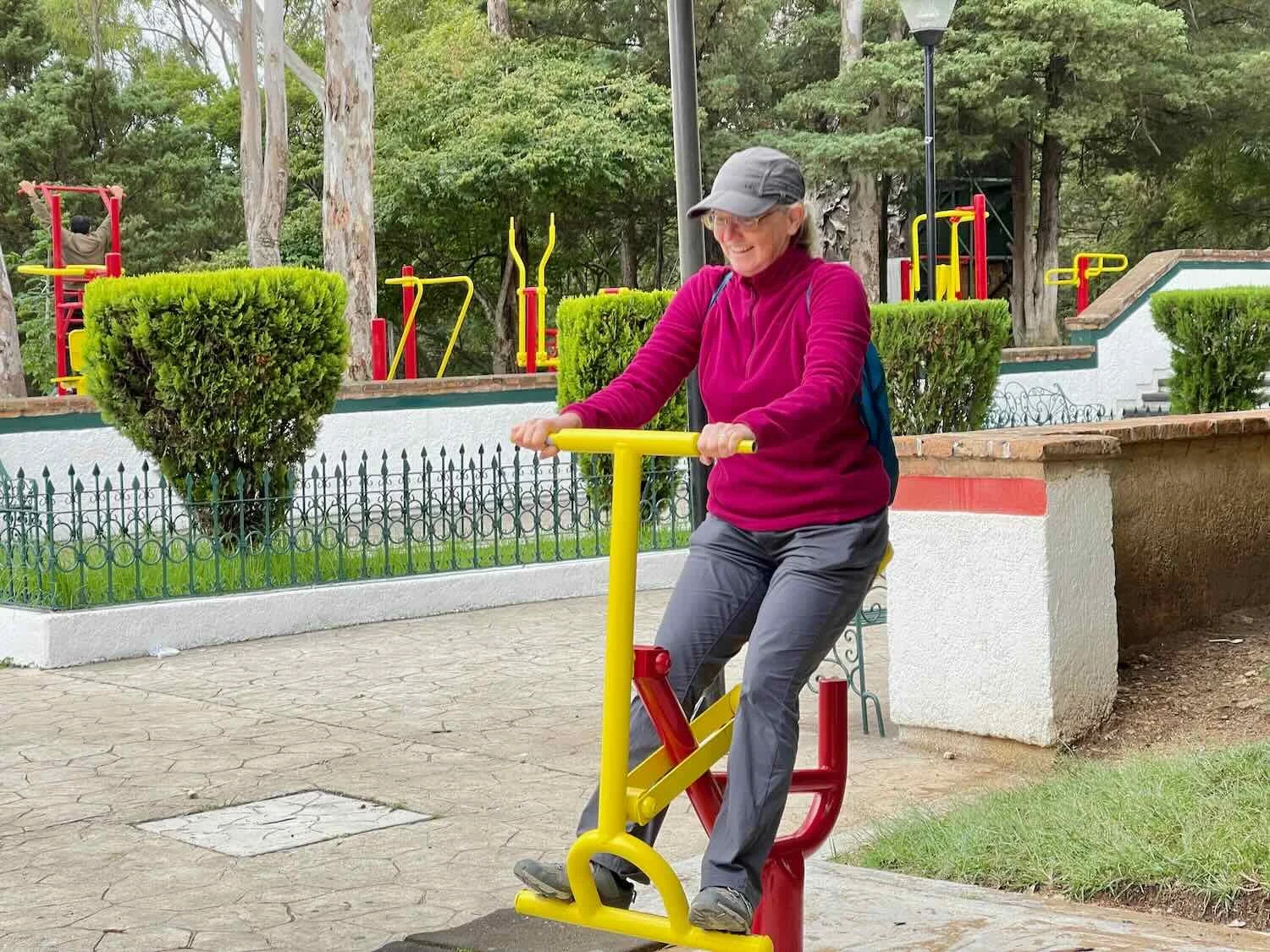Cycling the Chiapas Highlands: Arriaga to San Cristóbal de las Casas, Mexico
1 - 18 October 2023
1 October - Arriaga to Tierra y Libertad (16.4 mi, 26.4 km)
2 October - Tierra y Libertad to Ocozocoautla (49.4 mi, 79.5 km)
3 October - Rest day in Ocozocoautla
4 October - Ocozocoautla to Tuxtla Gutiérrez (18.7 mi, 30.1 mi)
5-11 October - Layover in Tuxtla Gutiérrez
12 October - Tuxtla Gutiérrez to San Cristobal de las Casas (38.8 mi, 62.5 km)
13-18 October - Layover in San Cristobal de las Casas
Life in the Sepultura Mountains
The climbing began even before we reached the edge of town. Over the next few days our route would take us steadily uphill, back into the highlands of southern Mexico. And we didn’t waste any time getting down to business. For four hours there were hardly any stretches of flat road, and nothing downhill. Fortunately, we had anticipated this and planned on a relatively low-mileage day so that we could take our time. And we were rewarded handsomely.
Less than an hour into our ride we entered the Sepultura Biosphere Reserve - a huge swath of land that’s 50% bigger than Rocky Mountain National Park. And it was absolutely stunning. There were no farms or small villages. Instead, the road meandered upwards along forested slopes and soared over steep-walled canyons adorned with bromeliads. Every so often we would round a hairpin turn and be greeted with a sweeping vista, where blue-green mountains formed the backdrop to lush, tropical valleys.
A grand vista of the Sierra Madre mountains. La Sepultura Biosphere Reserve, North of Arriaga, State of Chiapas, Mexico. Copyright © 2019-2023 Pedals and Puffins.
And within that unbroken forest, wildlife surrounded us. Regal magpie-jays, with their impossibly long tails, were common in the lower foothills. But the best sighting of the day was not a bird.
We had pulled over to the side of the road to take a photo of a panoramic view back down the valley. PedalingGuy had walked up the road a bit, while PedalingGal stayed with the bikes.
Stopped for what we thought would be a quick landscape photo shoot along the side of the highway. La Sepultura Biosphere Reserve, North of Arriaga, State of Chiapas, Mexico. Copyright © 2019-2023 Pedals and Puffins.
While waiting, PedalingGal noticed some movement in the top of a tree across the road. Within moments she realized this was a very special sighting - a white-nosed coati was feeding among the branches, and it didn’t seem concerned about our presence on the highway. She quickly tried to get PedalingGuy’s attention, fearing the animal would get shy, and disappear into the thick forest.
A white-nosed coati checks out the tempting pods of a cecropia tree. They are a relative of the North American raccoon. Notice the resemblance? La Sepultura Biosphere Reserve, North of Arriaga, State of Chiapas, Mexico. Copyright © 2019-2023 Pedals and Puffins.
Unfortunately, PedalingGuy’s camera was acting up. Moisture had gotten into the camera, which caused an error message to pop up each time he tried to take a picture. If that wasn’t enough, he had recently done a factory reset which caused him to lose many of his preferred settings, and from which he had still not fully recovered. The result was lots of fiddling before a picture could be taken. For several agonizing minutes, he adjusted the camera’s various buttons and dials, trying to get it to work. Tensions rose. PedalingGal tried to keep an eye on the coati as it disappeared, and then reappeared among the leaves of several different trees. A couple of times the animal seemed to grow fearful and duck for cover. Fortunately, it always reappeared a few moments later.
In fact, what we had accidentally stumbled upon was a whole family group of coatis, working their way through a grove of cecropia trees that were laden with seed pods. There were at least three or four of them, maybe more. And once PedalingGuy got the camera working, we relished nearly 15 minutes of quality time with the family. Coatis are diurnal (active during the day), but they are typically very shy - avoiding people. Plus, they usually feed on the ground (although they are excellent climbers). Perhaps the fact that they were up in the trees, feeding on the seed pods, helped them feel a bit more comfortable around us. Whatever the reason, we were thrilled by the chance to get such a good look at these endearing creatures.
There also were some much smaller, but equally fascinating animals. Among the most dazzling was a nest of four golden silk spiders (a species that actually occurs throughout the southeastern USA, as well). The first thing that catches your eye with these spiders is their humongous size - it’s one of the largest spiders in the world that’s not a tarantula. The female spider in the web that we found was easily 3-4 inches in length from the front of her spindly, yellow-and-black striped legs to the back. And her bright, lemon-lime body sported two rows of white dots that almost glowed.
The spiders seemed to be active hunters. Every time we accidentally hit a strand of the web while trying to take a picture, the closest spider would sense the movement and rapidly move toward the disturbance, hoping that potential prey had been entangled. Fortunately, these spiders are not dangerous to humans. So it wasn’t really all that daring to get close enough for a portrait photo.
A female, golden silk spider looked almost jewel-like in her web. The females are really big, and are typically 5x the size of the males. La Sepultura Biosphere Reserve, North of Arriaga, State of Chiapas, Mexico. Copyright © 2019-2023 Pedals and Puffins.
As we gained altitude, some of the hillsides were covered with more open woodlands. La Sepultura Biosphere Reserve, North of Arriaga, State of Chiapas, Mexico. Copyright © 2019-2023 Pedals and Puffins.
Bromeliads and some other plants eked out a precarious existence on this rocky cliff. La Sepultura Biosphere Reserve, North of Arriaga, State of Chiapas, Mexico. Copyright © 2019-2023 Pedals and Puffins.
Our route passed through two tunnels along the way. Fortunately, they weren’t too long. And the nice, wide shoulder of the road continued all the way through to the other side. La Sepultura Biosphere Reserve, North of Arriaga, State of Chiapas, Mexico. Copyright © 2019-2023 Pedals and Puffins.
Eventually we reached the top of the ridge, and enjoyed a quick, 15 minute descent into the town of Tierra y Libertad (pop. 2,570). To celebrate, we stopped at a tiny tienda on the way into town for a cold, refreshing drink. As we were parking our bikes outside the store, a man who we’ll call ‘the town extrovert’ rode up on a bicycle to engage us in conversation. He seemed to know all the locals, and enjoyed talking with everyone including the store owner, local kids, and others nearby. Approaching us, he asked the usual questions, like “Where are you from?” and, “Where are you heading?”
But you can usually tell when something’s off, and he seemed a bit clingy - repeating the same questions and not wanting to let us disengage. After a couple of tries we did manage to extract ourselves. When we emerged from the store he approached us again. This time he made a big show of giving us ‘his blessing,’ and then asked us for some money. We said “no,” and he finally left.
From there we headed over to the Hotel Santa Cruz, which was easily the smallest hotel we’d ever seen. In fact, it wasn’t really a hotel in the usual sense. It appeared to be just one room, attached to the home of some folks who ran a hardware store next door. If we had known in advance that there was only one room for rent in the entire town, we might have been a lot more anxious about having a place to stay that night. But it all worked out fine. We had arrived very early in the day, so we beat out any possible competition (if there even was any, given the exceedingly low-key nature of this town).
After cleaning up in the pleasantly cool shower (there was no hot water), we headed into town to look for food. We were surprised to find the large central plaza nearly deserted. In most towns we had visited in Mexico, the central plazas were always busy with people taking breaks on the benches or families letting their kids run around and play. It was extremely rare to see a plaza that felt so empty. The lack of people was particularly striking since it seemed like the town had invested in upgrading the plaza. It was really big, with wide walkways that curved among tall shade trees. And on one side, there was a large, covered pavilion with a basketball court and bleachers. But there were no more than two or three people there.
One possible explanation for the depopulation of the town was that everyone had left for the USA. Chiapas, where Tierra y Libertad is located, is Mexico’s poorest state. And since 2000, migration from Chiapas to the USA has surged more than five-fold. By 2010, Chiapas had become the Mexican state with the most migrants entering the USA annually. While that has helped the economy of some communities, as immigrants send remittances home to their relatives who remained behind, it has also emptied out some towns - especially of younger, more mobile people. Perhaps that is what has happened in Tierra y Libertad. It is difficult to know for sure, but we were told that this is the case for some towns in the area.
We did manage to find a grilled chicken vendor. We were pretty hungry so we purchased a whole chicken to go, figuring that we could eat any leftovers later in the evening. But when the proprietor brought us our order, the bag felt really heavy. When she saw our surprise, the owner said that they were having a ‘special’ and that she had actually given us a chicken and a half, for the price of one! That was a ton of food. We would definitely be dining on chicken for both lunch and dinner.
Our next dilemma was that our room at the ‘hotel’ was really tiny - one of the smallest we’d had yet - so taking the chicken dinner back to our room wasn’t a very appealing option. Instead, we walked back to the quiet plaza where we found a nice, shady spot on the bleachers under the large pavilion. There, we enjoyed a leisurely lunch before heading back to the hotel to escape the afternoon heat.
Although resting in the room got us out of the sun, there was no air conditioning. There was a nice cross breeze, but it was still quite hot. For the rest of the day we laid around inside our room, not inclined to move too much. Right around sunset, we went out to a little table on the patio that we shared with the owners of the hotel, and polished off the chicken for dinner.
Dinner on the patio at the Hotel Santa Cruz. Tierra y Libertad, State of Chiapas, Mexico. Copyright © 2019-2023 Pedals and Puffins.
As we were eating, a screeching racket from across the street grew louder and louder, until it was impossible to ignore. Curious what was causing all the commotion, we walked over to have a look. The noise was emanating from the tops of two, tall royal palm trees, where a large flock of orange-fronted parakeets was settling in for the night. They weren’t easy to see. But with all the jostling among the birds for prime perches hidden from view, every once in a while one would pop out onto a branch where we could see it - apparently kicked out of the spot where it had been sitting by another parakeet that was higher in the pecking order. The displaced parakeet would then squawk angrily, before flapping back into the thickest part of the tree to muscle its way onto another perch. We watched for a few minutes, as the light slowly faded from the sky.
The hotel room was so tiny, there wasn’t enough room for the bikes. We had left them out on the patio during the day, but we really wanted to bring them inside for the night. The problem was that the only place the bikes would fit was right in front of the door - totally blocking our only exit. We reassured ourselves that in case of an emergency, we could scramble over the closest bed and get to the door for an escape. But it really wasn’t ideal. Luckily, no disasters occurred during the night, so we didn’t have to test our theories about how to make a quick exit.
We managed to squeeze our two, fully-loaded bikes into our tiny hotel room for the night. They blocked our access to the exit. But luckily we didn’t have any reason to go out until morning. (Note the old, CRT TV on the shelf.) Tierra y Libertad, State of Chiapas, Mexico. Copyright © 2019-2023 Pedals and Puffins.
Entering the Central Chiapas Depression
Fortunately for us, the Central Chiapas Depression is a geological feature, not a state of mind. It’s a broad, relatively low area in the Chiapas highlands that lies between the Sierra Madre mountains to the southwest, and the high Chiapas Plateau to the northeast. About a half hour after leaving Tierra y Libertad, our route dove down into the depression, and we rode across it for the rest of the day.
As we hit the road a little before sunrise, a warm, misty haze hung over the nearby mountains. The clouds were so thick and gray we worried at first that it might rain. But before too long the bright sun burned away the fog, and we had a beautiful day for cycling.
We spent most of the day rolling over long, low hills and lovely rural valleys. The lower slopes were covered with grasslands, savannas, and even a few wetlands. Cornfields and pastures intervened wherever there were rural communities. Early in the day we were delighted to pass a small rookery of cattle egrets that were nesting right by the highway. About 20 birds were hanging out in the trees near the nests. And they didn’t seem too concerned when we stopped to take a few photos.
Cresting one of the long, low hills in the Central Chiapas Depression - a low-lying trough between higher mountain ridges. Near Lindavista, State of Chiapas, Mexico. Copyright © 2019-2023 Pedals and Puffins.
A crowd of cattle egrets hanging out near their nests in a rookery right next to Hwy 200D. East of Tierra y Libertad, State of Chiapas, Mexico. Copyright © 2019-2023 Pedals and Puffins.
A cattle egret on its nest. East of Tierra y Libertad, State of Chiapas, Mexico. Copyright © 2019-2023 Pedals and Puffins.
As the afternoon warmed up, large numbers of brightly-colored butterflies and moths appeared along the roadside. We were particularly smitten with the neon blue-green and jet black pattern of the urania swallowtail moths. Besides their gorgeous coloration, these moths are really unusual for a couple of reasons. For one thing, they fly around in the day, not night (unlike most moths). They are also subject to periodic population explosions, in which thousands of moths can migrate en masse for hundreds of miles in search of new food sources. That’s potentially what we saw, because the main breeding habitat for the species is lowland mangroves and swamps - not the highlands of Chiapas where we encountered them.
At nearly 50 miles (80 km) and 6.5 hours of cycling, it was a pretty long day. So we were glad it ended with our arrival at a very comfortable hotel in the heart of Coita (a.k.a., Ocozocoautla), a Pueblo Mágico in the very heart of Chiapas. Just off the hotel lobby, along a sweeping staircase, an artist was painting a large, colorful mural on one of the hotel’s walls. It was a vibrant depiction of some of the area’s most famous attractions, including a masked figure from the city’s spring Zoque Festival, nearby waterfalls, and a green parrot representing a natural area not far away where you can watch flocks of the parrots return to their nightly roost. The kaleidoscope of colors in the mural was fantastic, and we enjoyed watching the image emerge as the artist carefully completed each section.
An artist carefully uses spray paint to create a vibrant image of the area’s big attractions on a wall in our hotel. Ocozocoautla de Espinosa, State of Chiapas, Mexico. Copyright © 2019-2023 Pedals and Puffins.
The hotel room was so comfortable that we decided that evening to spend a layover day in Coita. But around 7:30pm, we had a stroke of bad luck. For some, unknown reason the power started to flicker. It went off and on a number of times, each time staying off a bit longer. Then, finally, it went out for good. There went the air conditioning. We got ready for bed in the dark, hot, stuffy room. At 9pm the electricity was still off. We had flashbacks to our stay in Axochiapan, where we had to skip a rest day in a great hotel because the electric power went off and never returned. It was a disappointment, for sure.
But around 10:30pm our luck finally turned, and the electricity came back on. We were happy to be able to take a break - with power - the next day.
The Church of the Holy Trinity was just a couple of blocks from where we stayed. Its most notable characteristic was the inclusion of a giant, concrete, atrial cross out front that also served as the bell tower (the bells are inside coves on the back side of the cross). Ocozocoautla de Espinosa, State of Chiapas, Mexico. Copyright © 2019-2023 Pedals and Puffins.
Mural of a jaguar. Ocozocoautla de Espinosa, State of Chiapas, Mexico. Copyright © 2019-2023 Pedals and Puffins.
Some Mexican cities and towns are primarily served by taxis, some by colectivos (mini vans that cram riders inside and follow pre-determined routes), and still others are dominated by tuk-tuks. You just have to arrive and see what the options are. Coita was definitely a tuk-tuk town. The noisy, sputtering, three-wheeled ‘moto taxis’ (as they’re called by locals) were everywhere. We even hopped in one of the tuk-tuks a couple of times to avoid walking up the long hills in the afternoon heat.
On the evening before our departure we had dinner at what looked like one of the nicer restaurants in town, located conveniently across the street from the hotel. Unfortunately, some time later PedalingGuy came down with a stomach bug. Usually it’s PedalingGal that falls ill, while PedalingGuy comes through unscathed. But not this time. We considered delaying another day, but we had a relatively short, not too hilly ride planned. So we decided to try leaving in the morning, as long as PedalingGuy was feeling well enough. We’ve been told by locals that one of the reasons why there are so many sidewalk food vendors in Mexico is because lots of Mexicans believe that, in contrast to conventional travel wisdom, sidewalk food vendors have fresher food than restaurants. PedalingGuy’s food poisoning had us wondering…
A Quick Ride to the Capital of Chiapas
On the way out of Coita we passed an extraordinary statue that practically shimmered with bright colors in the morning light. Called El Mahoma (“the Mohammed”), it depicts one of the characters portrayed in the city’s famous Carnaval Zoque festival. We recognized El Mahoma right away as being similar to an image that the artist had painted on the wall inside our hotel. In fact the celebration of the Carnaval Zoque involves a whole host of masked characters that combine indigenous Zoque, Spanish and Arabic influences. Each spring the archetypal figures dance and ‘battle’ each other to reenact the age-old struggle between good and evil.
El Mahoma raised his sword in challenge as we left the city. Ocozocoautla de Espinosa, State of Chiapas, Mexico. Copyright © 2019-2023 Pedals and Puffins.
From a cycling perspective, the hardest part of the day was the first hour. We had to climb nearly four miles of steep, winding road to get back to the autopista (toll road). Part of the mountainside was an ecological park, with a dense blanket of broad-leaved trees. Along the way, our uphill journey was brightened by the sight of a gorgeous, russet-crowned motmot sitting on a utility wire.
The subtle colors of a russet-crowned motmot looked radiant against a misty, gray sky. Ocozocoautla de Espinosa, State of Chiapas, Mexico. Copyright © 2019-2023 Pedals and Puffins.
Once we reached the top of the climb, it was basically all downhill into Tuxtla Gutiérrez, the capital of the state of Chiapas. At first we flew down the road. But Tuxtla is a very big city, and before long we were moving ever more slowly as the traffic grew thick and the stop lights more frequent.
With five miles to go we found ourselves on a hair-raising adventure, cycling through a dense, urban, commercial district. We weaved back and forth between the sidewalk and the road, dodging buses, colectivos, taxis, turning vehicles, and pedestrians who were all vying for the same narrow strip of travel space along the side of the road. We’ve started to wonder whether the city sidewalks and roadsides in Mexico are designed to weed out the weak and infirm. They are a literal obstacle course of ledges, holes large enough to swallow a person, pipes, poles, vendors, dogs, construction, and a few people daring enough to use them for walking or cycling. Cycling can be a real challenge, but proceeding slowly is helpful. Luckily, most Mexicans are used to the chaos, and are alert as well as patient.
Eventually we gained some relief, when a protected bicycle path miraculously appeared. But even then we had to stay on our toes. The path was very narrow and closely hugged the edge of the road, which took sudden, tight turns around colectivo pull-outs every 50-100 meters. And all along the way pedestrians thought nothing of stepping out in front of us, while street vendors happily used the bike path to wheel their carts down the road. Even so, it was a lot better than riding out in the traffic or on the sidewalk.
After lingering over a second breakfast upon arriving in the city (at an IHOP of all places - the first one we had seen in Mexico), we still rolled up to our hotel far too early - around 11am. It was not a big surprise when the receptionist told us that we wouldn’t be able to check in for at least two more hours. But it was still a bummer.
Luckily there was a pleasant little park just a block away where we were able to wait on a bench in the shade of some trees. A series of stone steps led from where we were sitting up onto a hill, evoking the stepped pyramids of the Mayans. At the top stood the Monument to the Flag, which included a statue of two women clasping hands (one representing the State of Chiapas and the other symbolizing Mexico). In the early 1800s it was by no means a foregone conclusion that Chiapas would become part of Mexico, since many people in the region preferred aligning with Guatemala and Central America (and Guatemala didn’t even formally accept Mexico’s annexation of Chiapas until 1895). So in some ways the monument feels like a reminder to folks that Mexico was the winner in that argument. From the top of the hill, there’s a fabulous, sweeping view of the urban valley below.
The Monument to the Flag in the Bicentennial Park. Tuxtla Gutiérrez, State of Chiapas, Mexico. Copyright © 2019-2023 Pedals and Puffins.
The Place of the Rabbits
We spent the next few days hanging out and enjoying the urban conveniences of Tuxtla. Its name derives from a native word meaning “the place where rabbits abound,” and images of rabbits could be seen on signs all over town. An official rabbit icon designed to look like a Mayan carving popped up on most of the city’s street signs. Businesses incorporated rabbits into their advertising. And even Bugs Bunny showed up in a few places.
As a modern city, Tuxtla didn’t have a quaint central area with lovingly restored historic buildings. Instead it was a grab bag of styles, from colonial churches to updated commercial districts, a gritty urban core, and a few modernist buildings. Its sleek, neo-classical, main Cathedral was rebuilt in 1982 with a clock tower that housed a mind-blowing 48 bells. Each hour, the bells played music, while a procession of the 12 apostles glided slowly across a platform near the bottom of the tower. In contrast, the big, concrete blocks that comprised the Church of Our Lady of Guadalupe provided a vivid dash of modernist color along the city’s primary thoroughfare.
The hourly procession of the 12 Apostles at the Cathedral of San Marcos. Tuxtla Gutiérrez, State of Chiapas, Mexico. Copyright © 2019-2023 Pedals and Puffins.
Elegant canopies covered private dining patios at an upscale restaurant bordering the city’s central plaza. Tuxtla Gutiérrez, State of Chiapas, Mexico. Copyright © 2019-2023 Pedals and Puffins.
Tuxtla Gutiérrez was a colectivo town. There were relatively few taxis, and no tuk-tuks. Instead, the roads were jammed with the mini-vans (colectivos) that provide cheap, if somewhat claustrophobic transportation pretty much anywhere you’d want to go. Tuxtla Gutiérrez, State of Chiapas, Mexico. Copyright © 2019-2023 Pedals and Puffins.
One day we walked out to the city’s botanic garden, about a half hour away. We had a pleasant stroll around the grounds, which had a thick canopy of big trees. Next to the garden there was a small but terrific botany museum. We’ve visited many botanic gardens, arboretums, natural history and other museums, but this was our first botany museum. They seem to be rather uncommon.
It had very informative displays (in Spanish) about the trees of the region and their wood products, local plants and flowers, pollinators, and a special exhibit about forest mushrooms. We enjoyed our visit (although it was a bit hot and humid inside the museum).
PedalingGal learning about the flora of Chiapas at the Museo Botánico (although without air conditioning, she’s looking a little bit overheated). Tuxtla Gutiérrez, State of Chiapas, Mexico. Copyright © 2019-2023 Pedals and Puffins.
Keeping with the botanical theme… the Fuente del Magueyito (“fountain of the little agave”) graced a traffic circle near our hotel. Tuxtla Gutiérrez, State of Chiapas, Mexico. Copyright © 2019-2023 Pedals and Puffins.
We had a little bit of excitement during the night of 6 October, when our bed started shaking at 11:07pm. If you’ve ever been awakened by an earthquake in the night, you know that it’s a very strange feeling. You definitely know something’s up, but it takes a minute to realize what’s going on. That’s exactly what happened to us. We both woke up, but our foggy brains didn’t process the situation right away. Then, in the darkness, PedalingGal spoke the word, “earthquake!” We turned on the light and started to get dressed in order to evacuate the building. But then the shaking stopped, and it didn’t return.
A quick internet search revealed that a 6.0 magnitude earthquake had rumbled through the city, with an epicenter about 125 miles away (between Tuxtla and Oaxaca). Luckily, no one was hurt and reported damage was minimal. Mexico lies within a very active earthquake zone, with an earthquake of magnitude 4.0 or greater every five hours and about 1500 earthquakes every year. Most of the earthquakes are noticeable but of little consequence. Still, it’s relatively common to see old buildings that have been damaged by previous earthquakes. The 6.0 earthquake we experienced was considered fairly significant, and was larger in magnitude than 99% of the earthquakes in Mexico (https://earthquakelist.org/mexico/).
Since that day we’ve been a lot more attuned to possible earthquakes, and have felt several more, much lighter quakes during the nights.
During our long layover in Toluca (near Mexico City) we had replaced the bottom brackets on our bikes. But since then, PedalingGal’s crank had developed some minor play (movement). We debated for days whether we should have a bike mechanic take a look at it because it wasn’t urgent. Plus, we hate having unfamiliar bike mechanics work on our bikes and prefer to do our own repairs. Unfortunately, without the appropriate tools there wasn’t much we could do ourselves. On the other hand, there seemed to be a couple of good bike shops in Tuxtla, and we worried that a good mechanic might be much harder to come by further down the road.
Finally, on our last day in Tuxtla, we decided to take PedalingGal’s bike to a bike shop that looked good and had some nice, expensive bikes inside. It is unfortunate, but we have found that lacking personal recommendations from other cyclists, one of the best ways to find a good bike mechanic in a city you are unfamiliar with is to go to a bike store selling the most expensive bikes in town. Often the best mechanics are are attracted to the stores with the best bikes.
We ended up going to the Zona Bici bike shop on the main road through town, and it turned out to be a great decision. The senior mechanic seemed very experienced. He took the bottom bracket apart, cleaned and lubed all the parts, then put it back together again. He confirmed that the bearings were still good, and his cleaning and tightening seem to fix the issue. He did all this while we waited. Everything was now as good as new. Even more amazing, he insisted on not charging us anything. We would definitely recommend the Zona Bici shop on Blvd. Belisario Dominguez to other cyclists passing through Tuxtla.
The Biggest Mountain Ever
The bike ride between Tuxtla Gutiérrez and San Cristóbal de las Casas was a killer. There are no hotels and no good places to camp along the way. So to get there, we just had to suck it up and cycle nearly 40 miles (64 km), almost all up a steep hill. The elevation gain would be a leg-shredding 7,200 ft (2,200m). And to top it off, PedalingGuy was not yet fully recovered from the stomach bug he’d acquired in Coita. It would be a tough road.
The day didn’t start too auspiciously, either. We really should have gotten rolling as early as possible, but a series of unfortunate delays meant that we didn’t get out the door until after 7:30am - much later than we should have.
Then we had to get out of the urban zone. Sadly, we lost our nice bike lane in the heart of the city, which left us a little too exposed to the crazy traffic. So PedalingGuy got to work figuring out an alternative route. He led us down a parallel, still-busy-but-not-too-bad road for nearly two miles (3.2 km). Finally, we reached the edge of town.
After crossing the Grijalva River, the climb began. And it was relentless.
We were making slow, but steady progress when we reached a potential rest stop at a convenience store, about 1.5 hrs into our ride. However, we both still had a lot of water, so we rashly decided not to stop there for a break. It was a really dumb decision that we would later regret, because it would be another 11 extremely tough miles (18 km) to the next place where we could comfortably get off the road and buy something to drink. We had no idea how much we would suffer.
We did enjoy one, huge stroke of luck. From the moment we cycled onto the autopista there were big, orange barriers separating the traffic lanes from the road shoulder. And the barriers continued nearly all the way to San Cristóbal. They kept the big trucks and other slow-moving vehicles from encroaching onto the shoulder where we were cycling (which is something they commonly do in Mexico, especially when climbing long hills). The barriers were there because several viaducts along the highway were being repaired - with construction crews blocking the road shoulder. But for the vast majority of the distance, there was no construction to get in our way. As a result, we enjoyed very safe cycling for almost the entire day. That made a huge difference in our comfort level - especially as we started to get really tired.
But very soon after we had passed the convenience store, PedalingGuy started to really slow down. An hour later we had ridden less than four miles, and PedalingGuy had become seriously ill. Looking at his watch, he noticed that he had an elevated heart rate. Worse, his heart rate was recovering much more slowly than normal when he stopped to rest. He was exhausted, sweating profusely, and probably a little dehydrated - undoubtedly still suffering from the effects of that stomach bug.
We stopped along the side of the road, very glad that those big orange barriers gave us a buffer from the traffic. PedalingGuy sat down and said he didn’t feel well. He started to lay down, then suddenly fainted - collapsing like a rag doll onto the asphalt. The next thing he knew, he was lying on the ground wondering why PedalingGal was frantically slapping his face to revive him. It really is a shock to wake up with your wife slapping your head back and forth from one side to the other. He had no idea that he had passed out and wondered what the heck was going on. He didn’t really appreciate having his wife slap him like that. But he forgave her once she explained what had happened. He did remember how bad he felt before passing out, and wondered at the time if it was possible to feel any worse. Once revived by his slap happy wife, he felt much better.
But he still needed a break. So PedalingGuy stayed laying down, and we rested by the side of the road for another 15-20 minutes. Eventually he felt ready to get going again. But when he got up to leave, he left an imprint of sweat on the asphalt - looking unsettlingly like those crime scene body outlines you see in the movies.
For the record, we later researched what you should do when someone passes out. In contrast to what you may have seen on TV, slapping someone is generally not recommended, even though it appears to have worked out fine in this case and is definitely better than doing nothing. Just be careful not to slap too hard. Generally, shaking a person and calling out their name is best.
From there we rode very slowly and stopped often. For PedalingGuy, who was still was not feeling his best, every mile felt like a victory. Our road crawled gradually up the side of a huge escarpment with stupendous views across the broad valley of the Chiapas Depression (where we had started the climb), to the blue-green peaks of the Sierra Madre de Chiapas in the distance. There were lots of clouds in the sky, but somehow they managed to avoid blocking the sun for most of the day. So it got really hot - which didn’t help our situation.
As we cycled slowly up the escarpment onto the Chiapas Plateau, we were treated to absolutely magnificent views across the broad valley of the Chiapas Depression. Highway 190D between Tuxtla Gutiérrez and San Cristóbal de las Casas, State of Chiapas, Mexico. Copyright © 2019-2023 Pedals and Puffins.
A black vulture wheeled slowly over the foothills as we climbed ever higher into the mountains. Highway 190D between Tuxtla Gutiérrez and San Cristóbal de las Casas, State of Chiapas, Mexico. Copyright © 2019-2023 Pedals and Puffins.
It felt like a miracle when we finally reached a small snack stand at mile 21.5 (km 34.5). It had taken us over 4 hours to cover the distance from the previous convenience store, and we were running very low on water. A cold drink on a rickety wooden bench by the side of the road never tasted so good. We must have looked pretty bedraggled to the small group of locals hanging out at the store, but we didn’t care. And they were polite enough not to stare. We rested there for another 15 minutes before refilling our water bottles and getting back to the business of cycling up and up the mountain.
Around 3pm the sky finally clouded over and the temperature dropped, helping us to feel much more comfortable. We even had a bit of drizzling rain, which felt great and didn’t get the road too wet. The fact that we weren’t overheating so much made a huge difference, and kept us from having to drink so many fluids. But we were still pretty tired, so our progress remained slow.
A thick layer of clouds moved in during the afternoon, bringing much-needed relief from the baking sun, and even a cool drizzle. Highway 190D between Tuxtla Gutiérrez and San Cristóbal de las Casas, State of Chiapas, Mexico. Copyright © 2019-2023 Pedals and Puffins.
It was with great joy that we finally reached the top of the ridge, a little after 5:30pm. From there we appreciated a fast, but chilly, descent to the edge of San Cristóbal. As we cycled the last couple of miles across town it was rapidly getting dark, so we moved along as quickly as we could. Fortunately, there were no more big hills. We arrived at our hotel just as night enveloped the city, totally exhausted. It was heavenly to settle into a cozy, comfortable room having survived one of our toughest cycling days ever.
Layover in the Royal City
San Cristóbal de las Casas was a delightful place for a long layover. We spent almost a week strolling along its picturesque streets, dining in tranquil, courtyard cafes, and wandering among the various markets that give the city a lively, colorful ambiance. Here are some photos from our stay in this Pueblo Mágico.
The Cathedral of San Cristóbal Martír graces one side of the city’s Plaza de la Paz. The white-painted, geometric designs give the facade an almost Moorish look. San Cristóbal de las Casas, State of Chiapas, Mexico. Copyright © 2019-2023 Pedals and Puffins.
San Cristóbal has half a dozen pedestrian-only streets that make the city perfect for strolling among the many shops and museums. These andadores are particularly welcome because the traffic on the narrow, colonial streets can be pretty chaotic. San Cristóbal de las Casas, State of Chiapas, Mexico. Copyright © 2019-2023 Pedals and Puffins.
On the second day we discovered a wonderful hike up a long staircase known as the Walk of Penitence. On the side of a steep hill, 280 stairs lead up to a chapel dedicated to St. Christopher. It’s a very popular spot, and every time we visited we saw other folks either walking or jogging up and down the stairs.
The Walk of Penitence that leads up to the Templo de San Cristobalito. San Cristóbal de las Casas, State of Chiapas, Mexico. Copyright © 2019-2023 Pedals and Puffins.
At the top of the hill, behind the chapel, was an area with outdoor exercise equipment. And unlike so many of these outdoor exercise areas, this one always had a few people using the equipment. In too many cases, these types of exercise parks are not very functional for getting a real workout. But at San Cristobalito the machines were actually quite practical and well maintained. On each visit, PedalingGuy would take a few minutes to do a little bit of strength training. Even PedalingGal tried out a couple of the machines for fun.
From the top of the hill a walking path led back into a wooded area, and down the other side of the hill. Most days there were large flocks of migrant warblers flitting back and forth among the trees. We enjoyed seeing some of our ‘old friends’ from up north, like black-and-white warblers and Wilson’s warblers, down south for the winter. A nice surprise was the addition of a pair of rose-breasted grosbeaks feeding in some of the lower bushes.
View down a side alley from near the top of the San Cristobalito Hill. San Cristóbal de las Casas, State of Chiapas, Mexico. Copyright © 2019-2023 Pedals and Puffins.
Each evening the Plaza de la Paz in the center of the old town was transformed into an open-air market. It was an interesting spectacle to watch the mostly-indigenous vendors from throughout the region roll out their blankets and set up shop every afternoon, and then take everything down and disappear each night - only to do it all over again the next day.
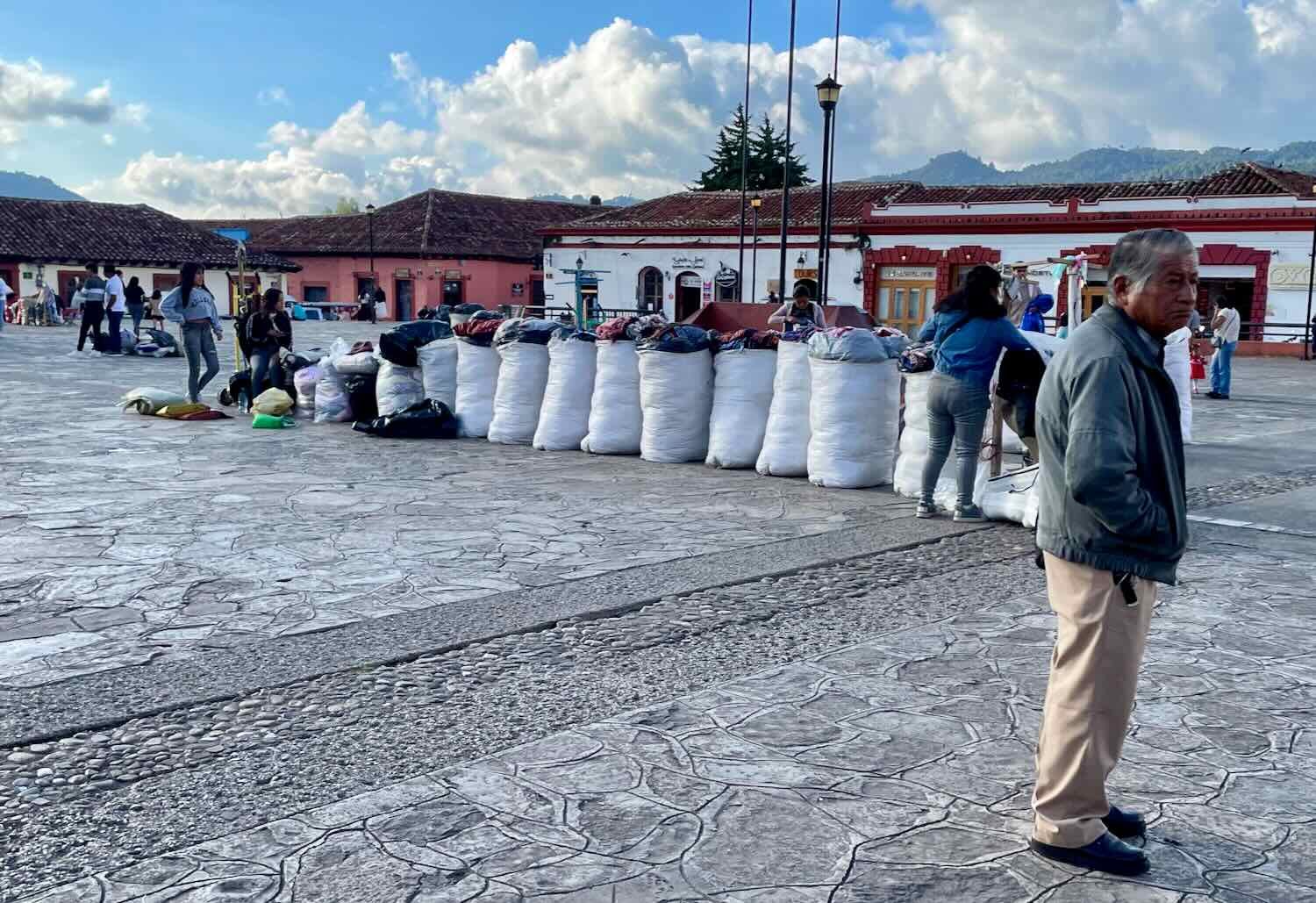
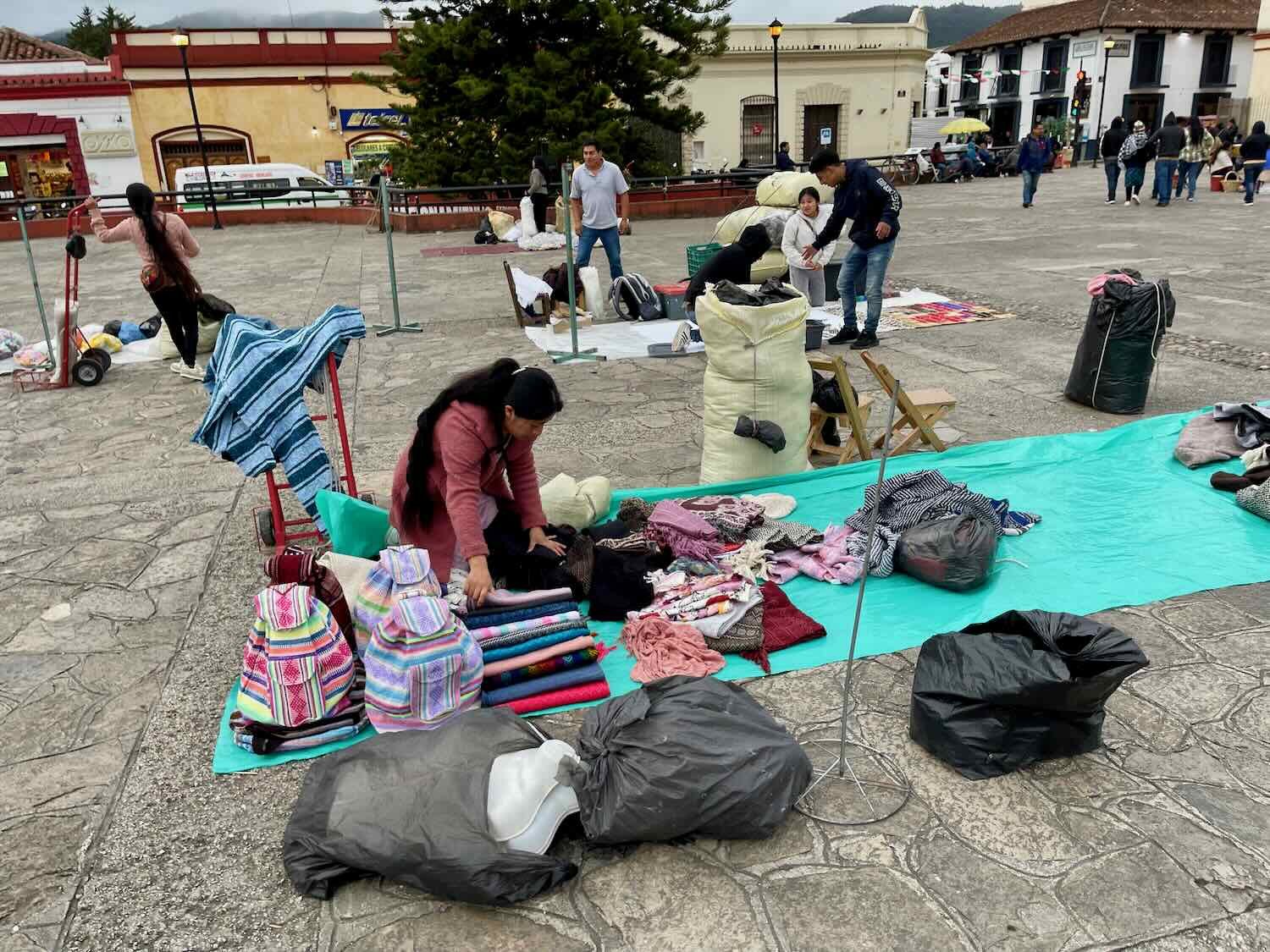
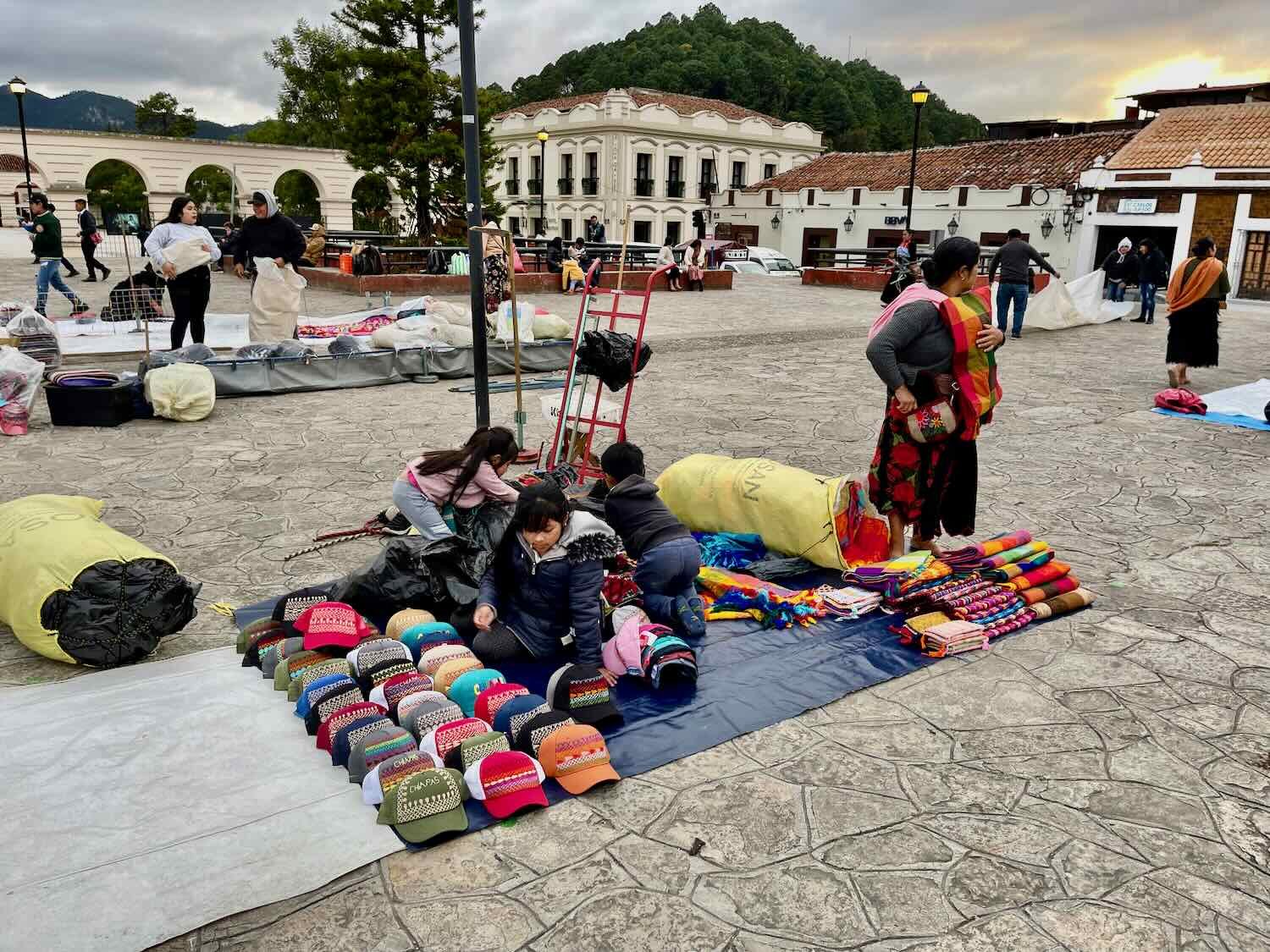
At the plaza market you could find everything from kitschy trinkets to sparkling, glow stick toys. But the real attraction was the profusion of high-quality, authentic, indigenous, hand-made clothing, scarves and blankets. Magically colorful woven cloth, embroidered dresses, and delicate bead work were in abundant supply.
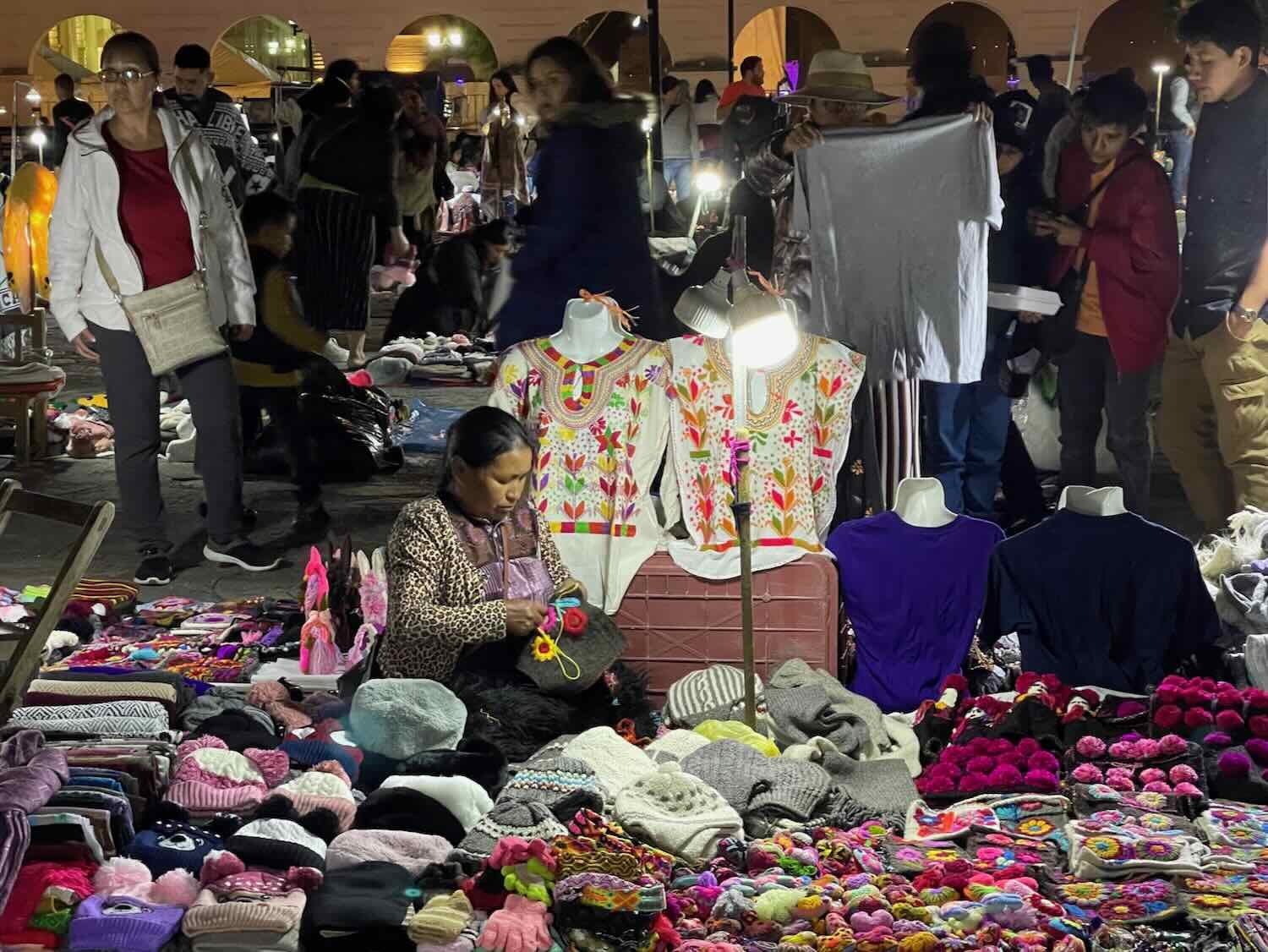

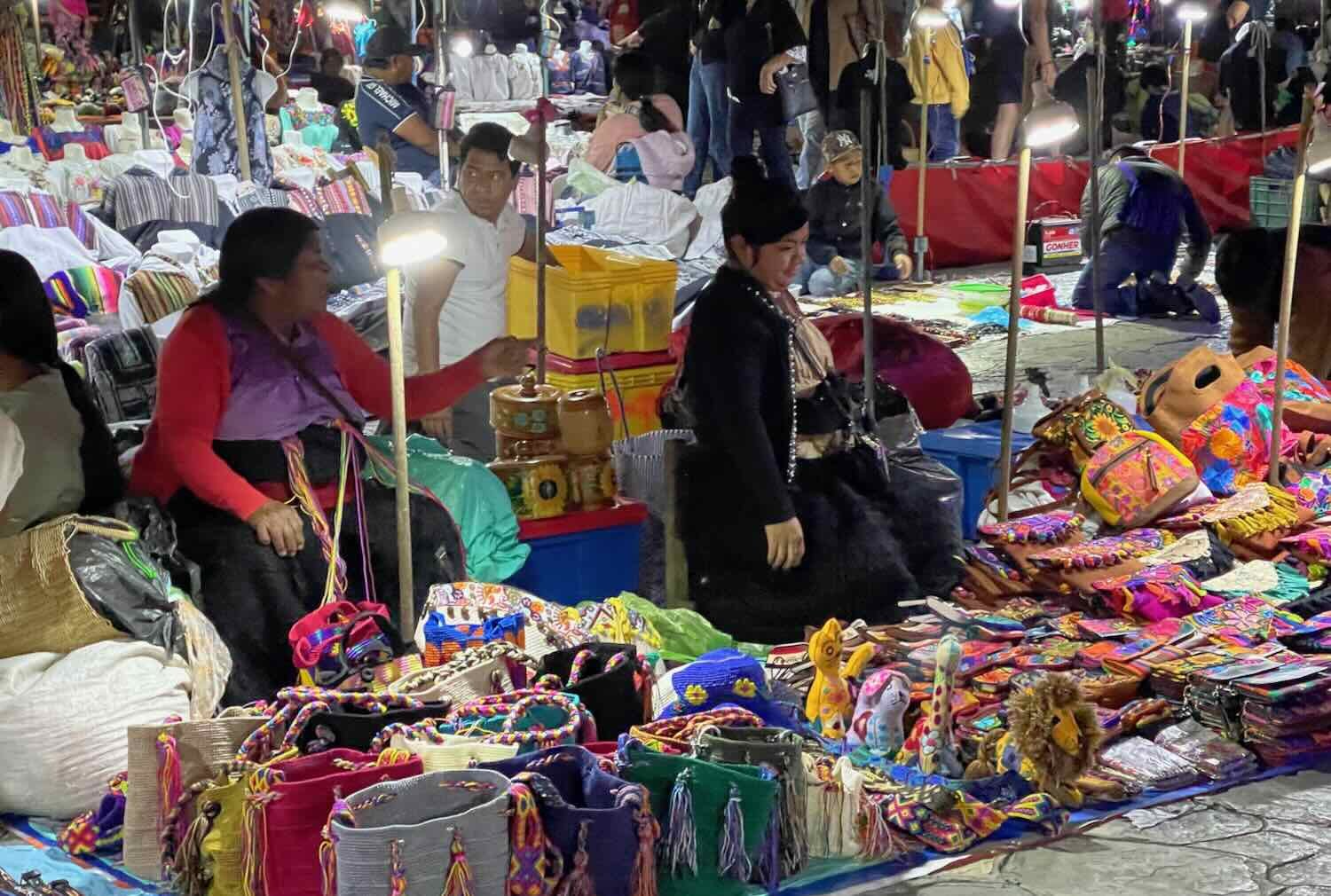
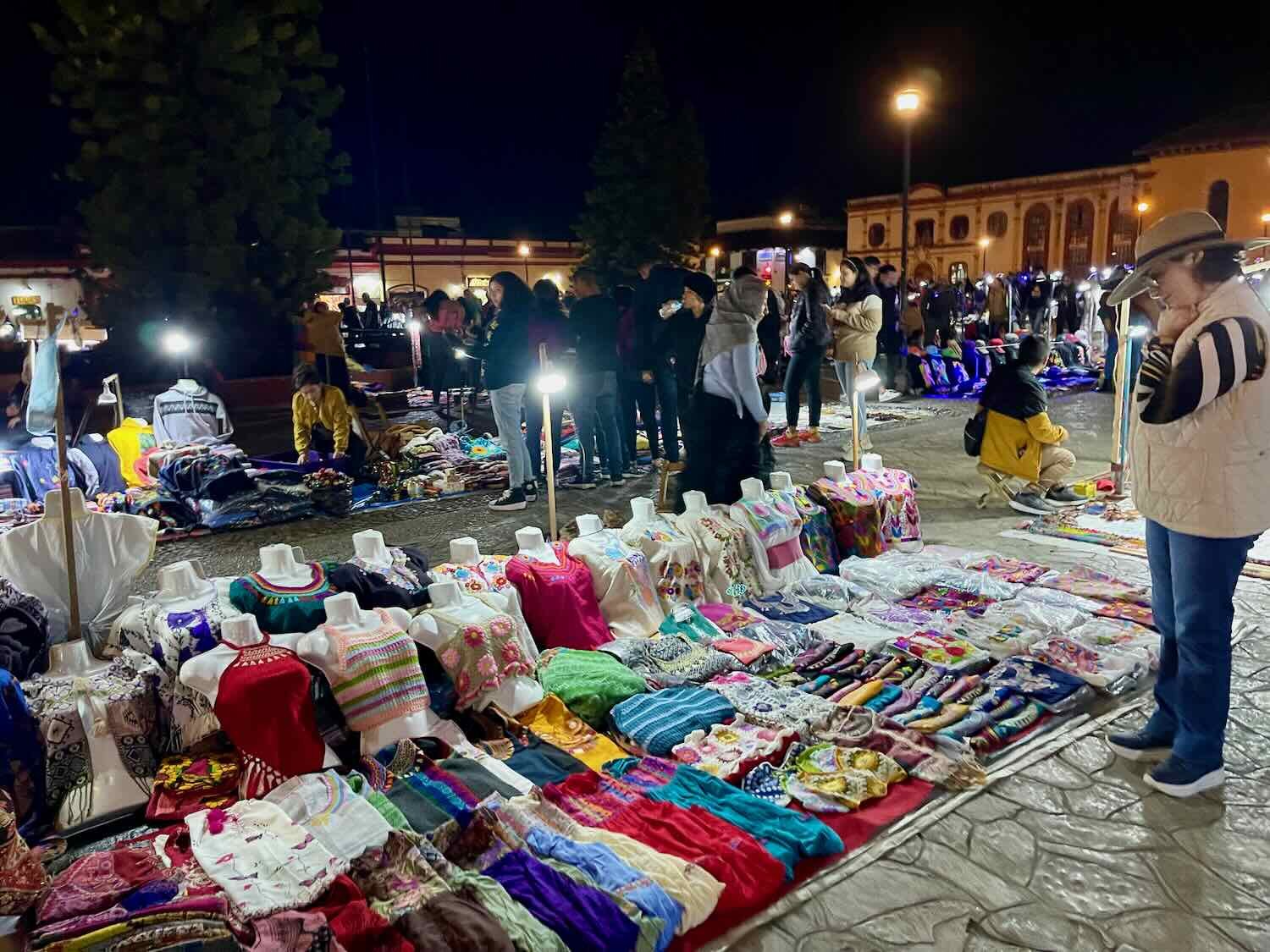
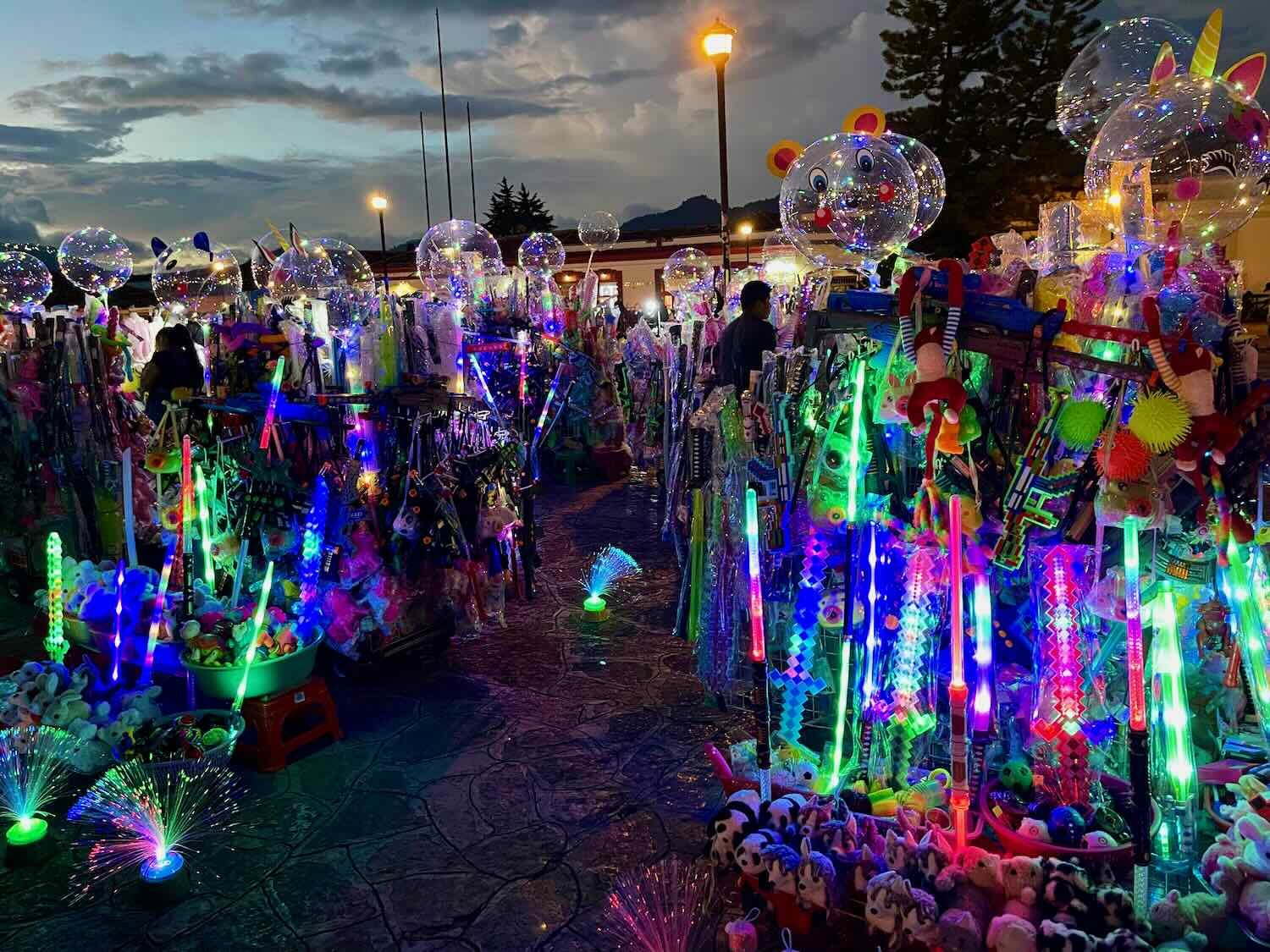
On Saturday evening a marimba band played live music at the gazebo in the nearby Plaza 31 de Marzo. San Cristóbal de las Casas, State of Chiapas, Mexico. Copyright © 2019-2023 Pedals and Puffins.
In another part of town, away from the main plazas, lies the municipal market. It was a lot less touristy than the evening market. And it was where the locals did most of their shopping for essentials. We made several trips to the market to pick up some fruit, or to just enjoy wandering among the many vendors.
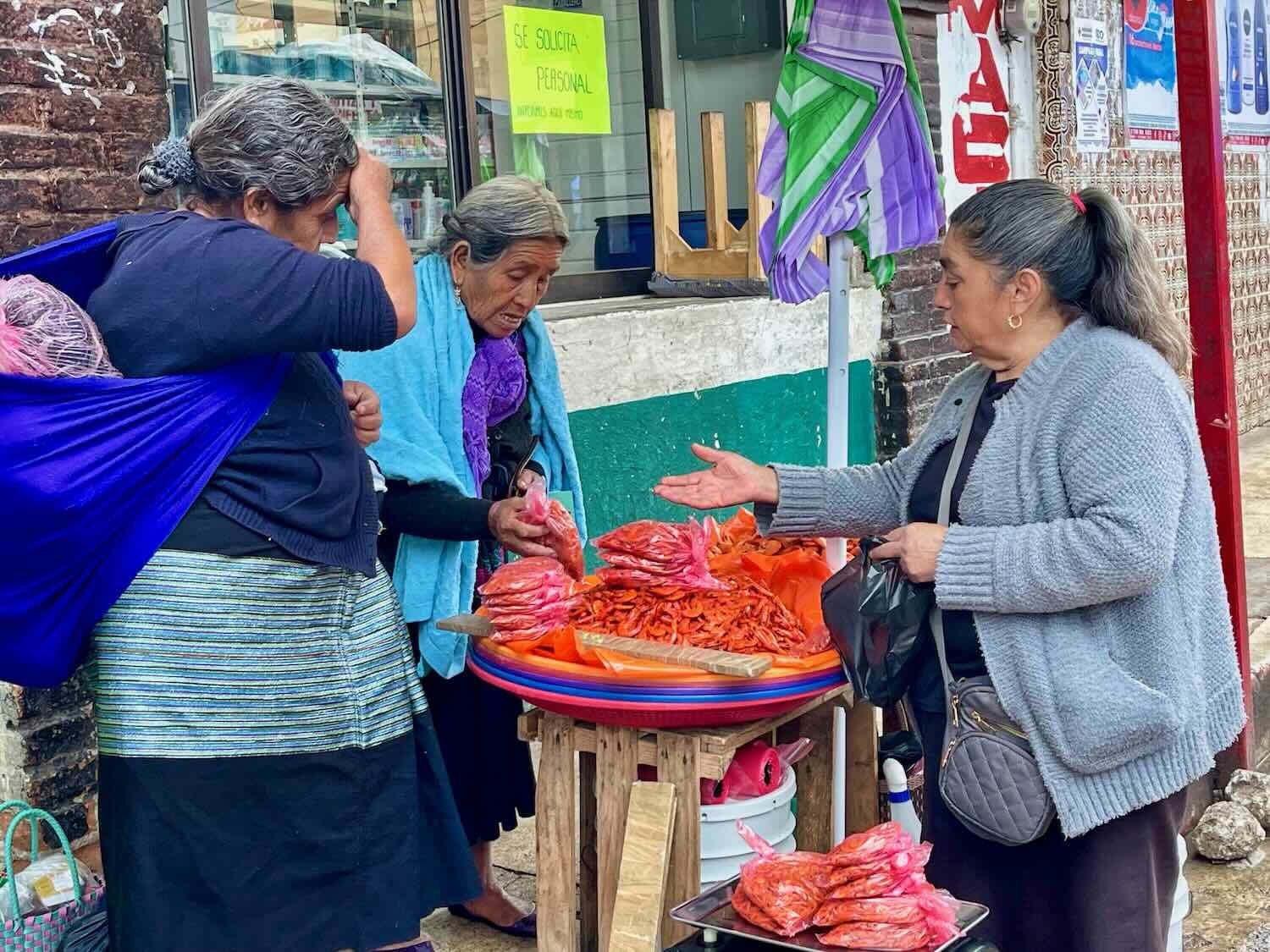
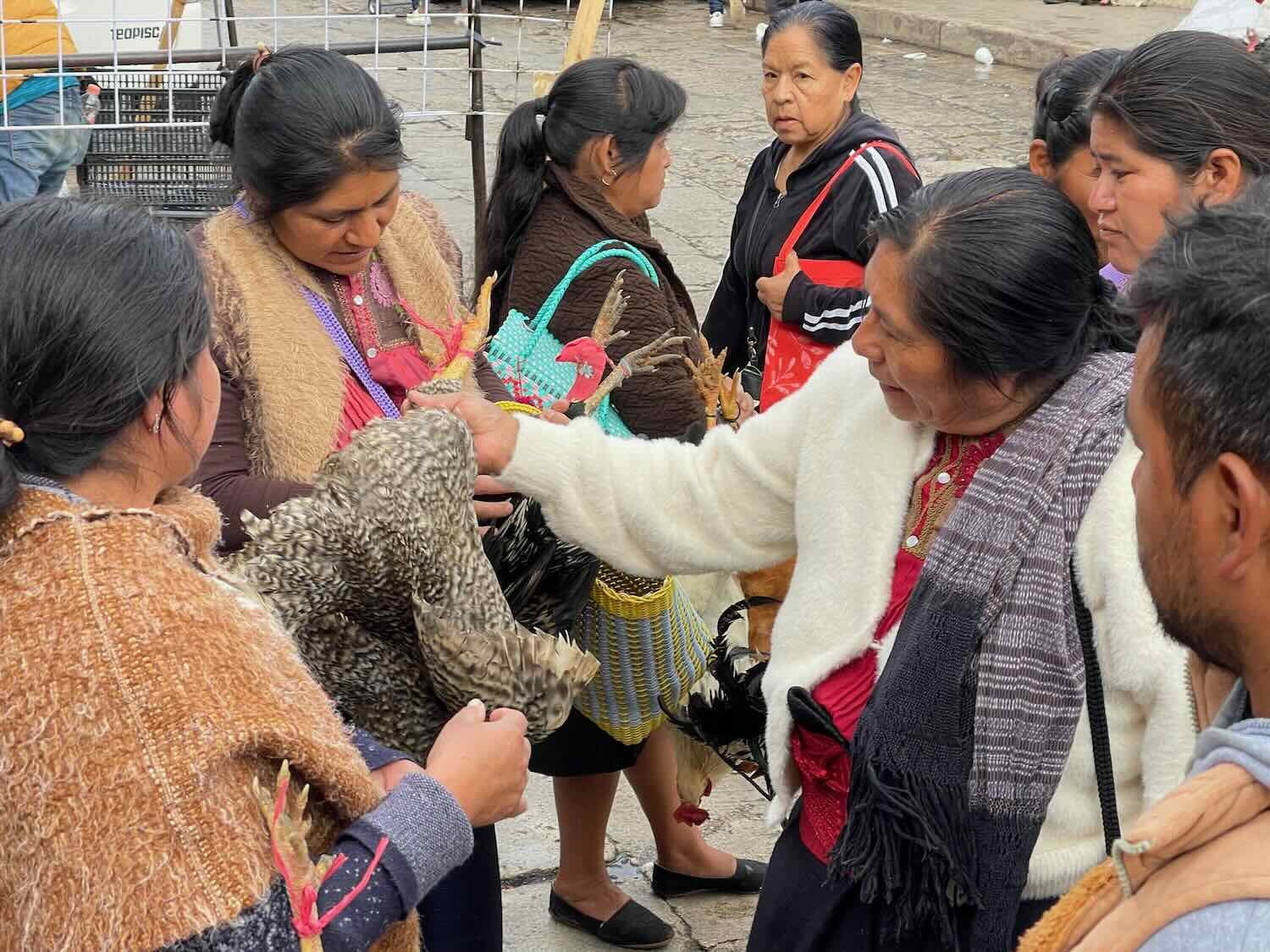
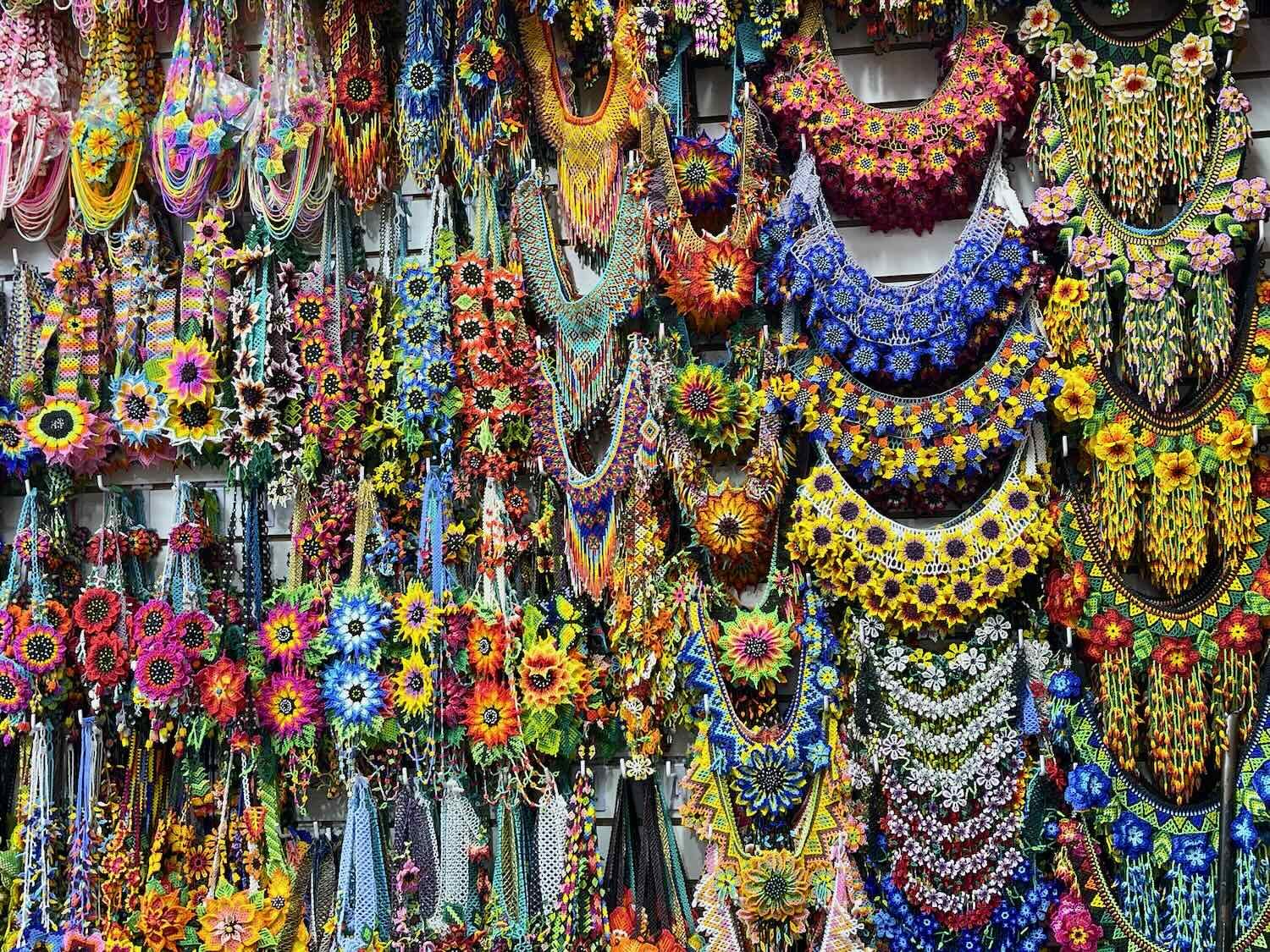
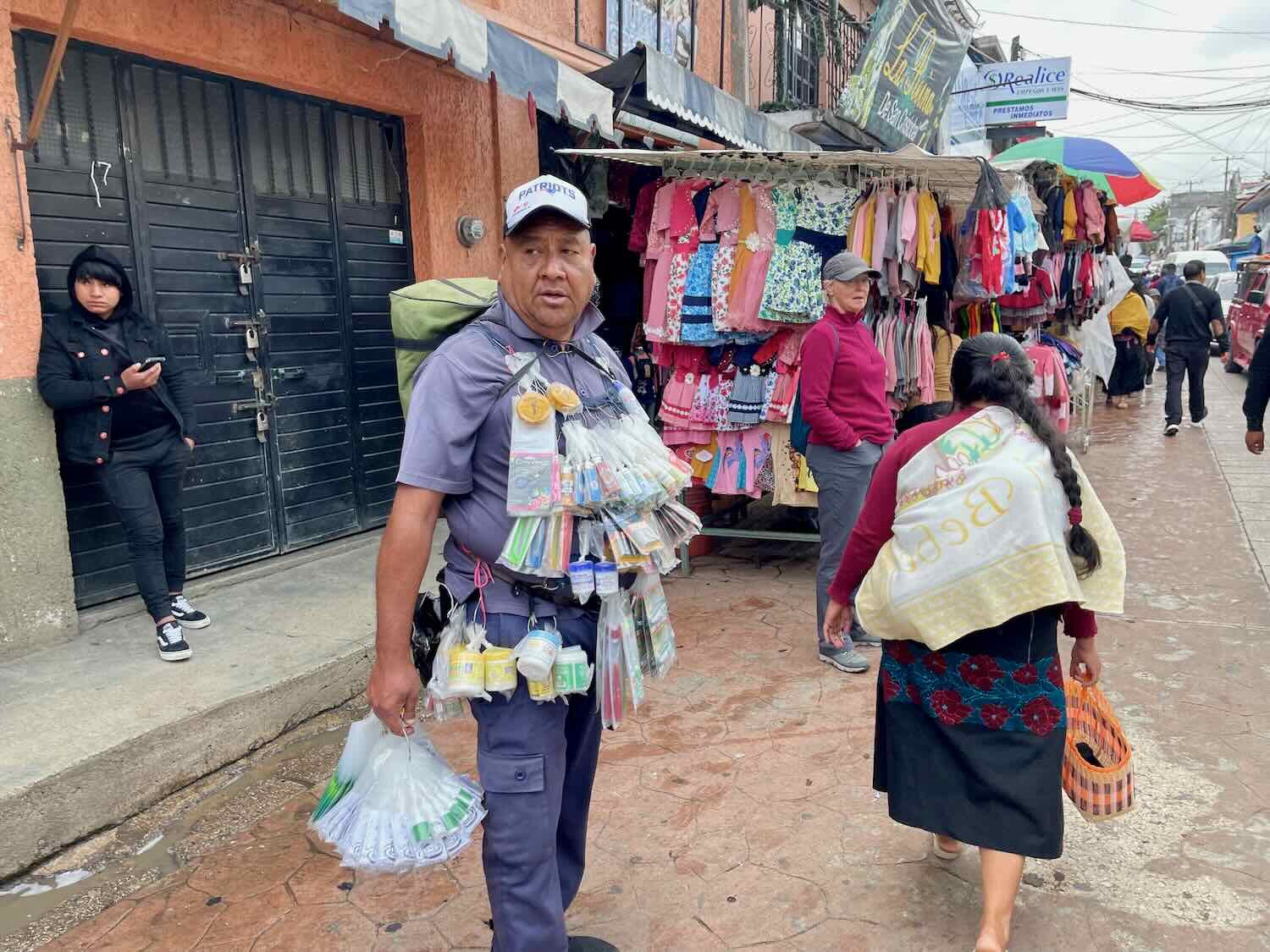
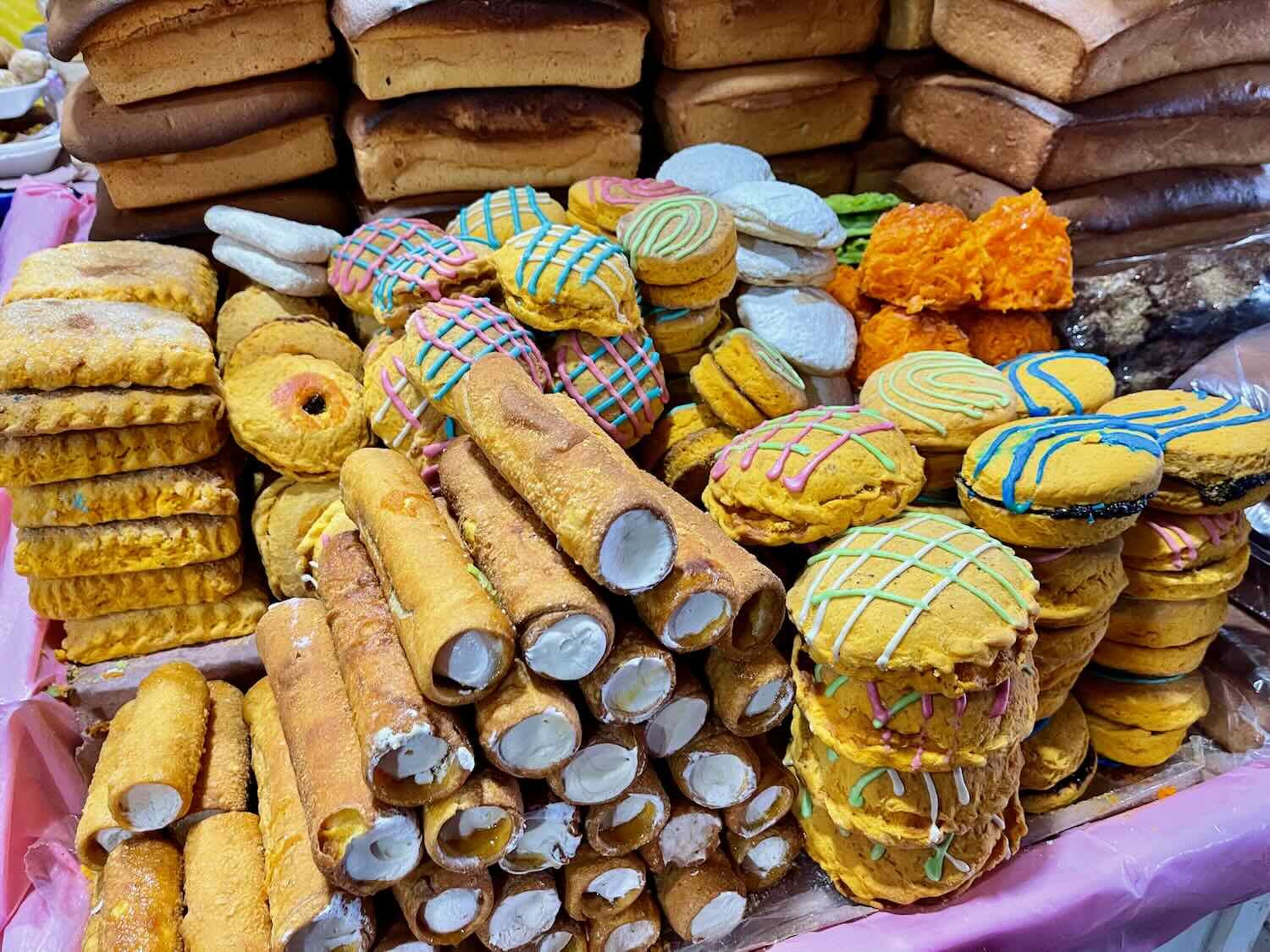
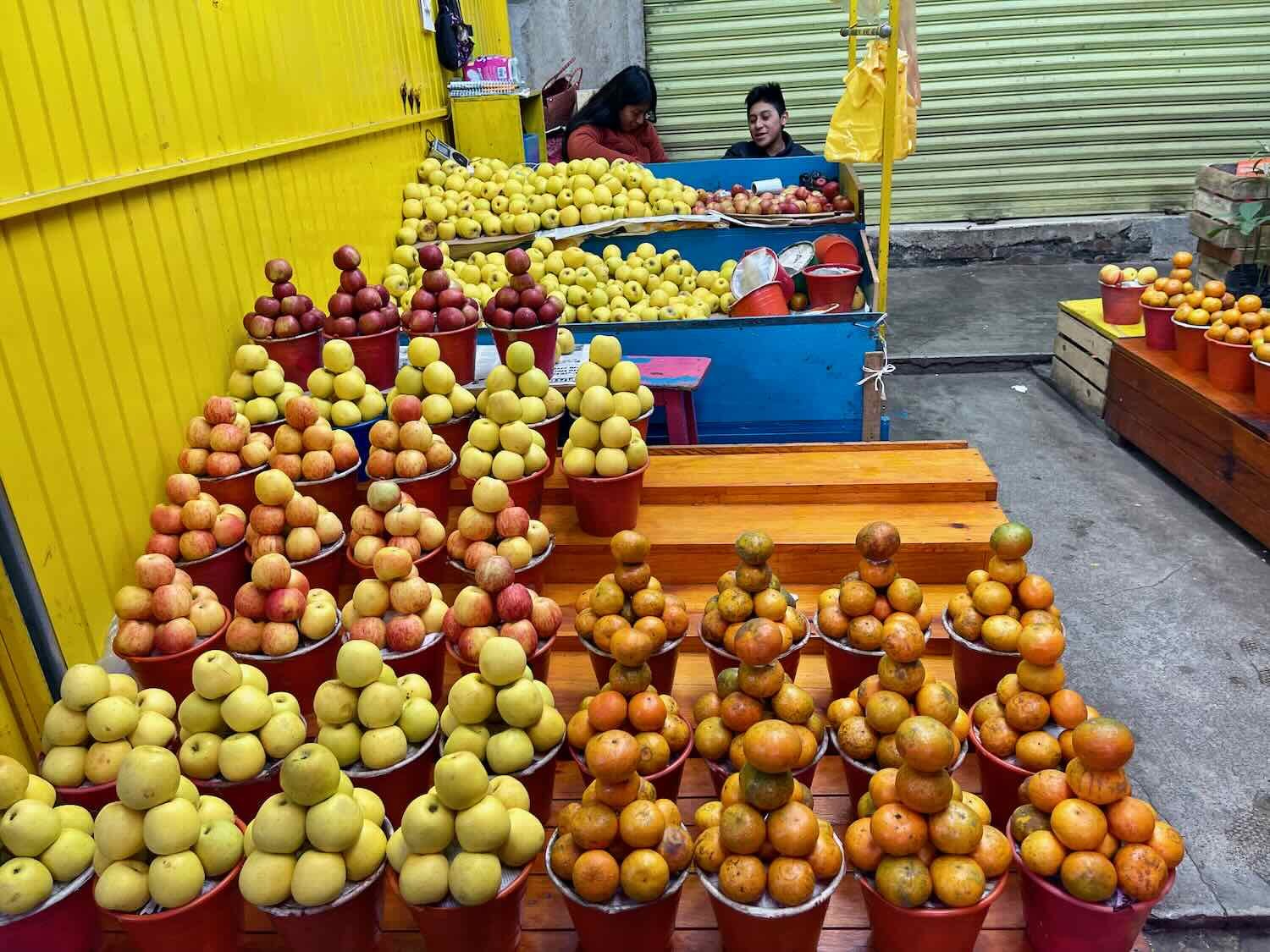
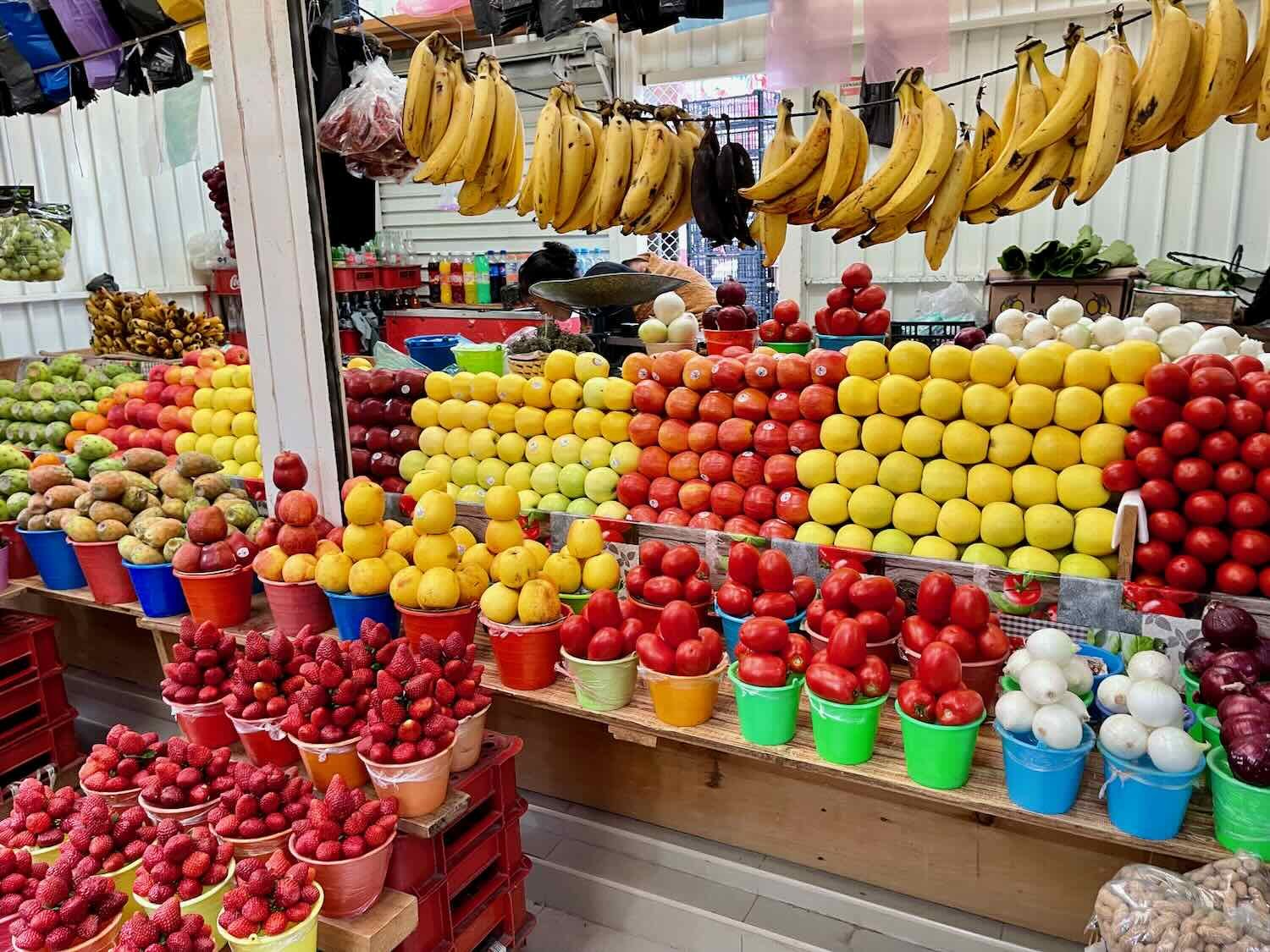
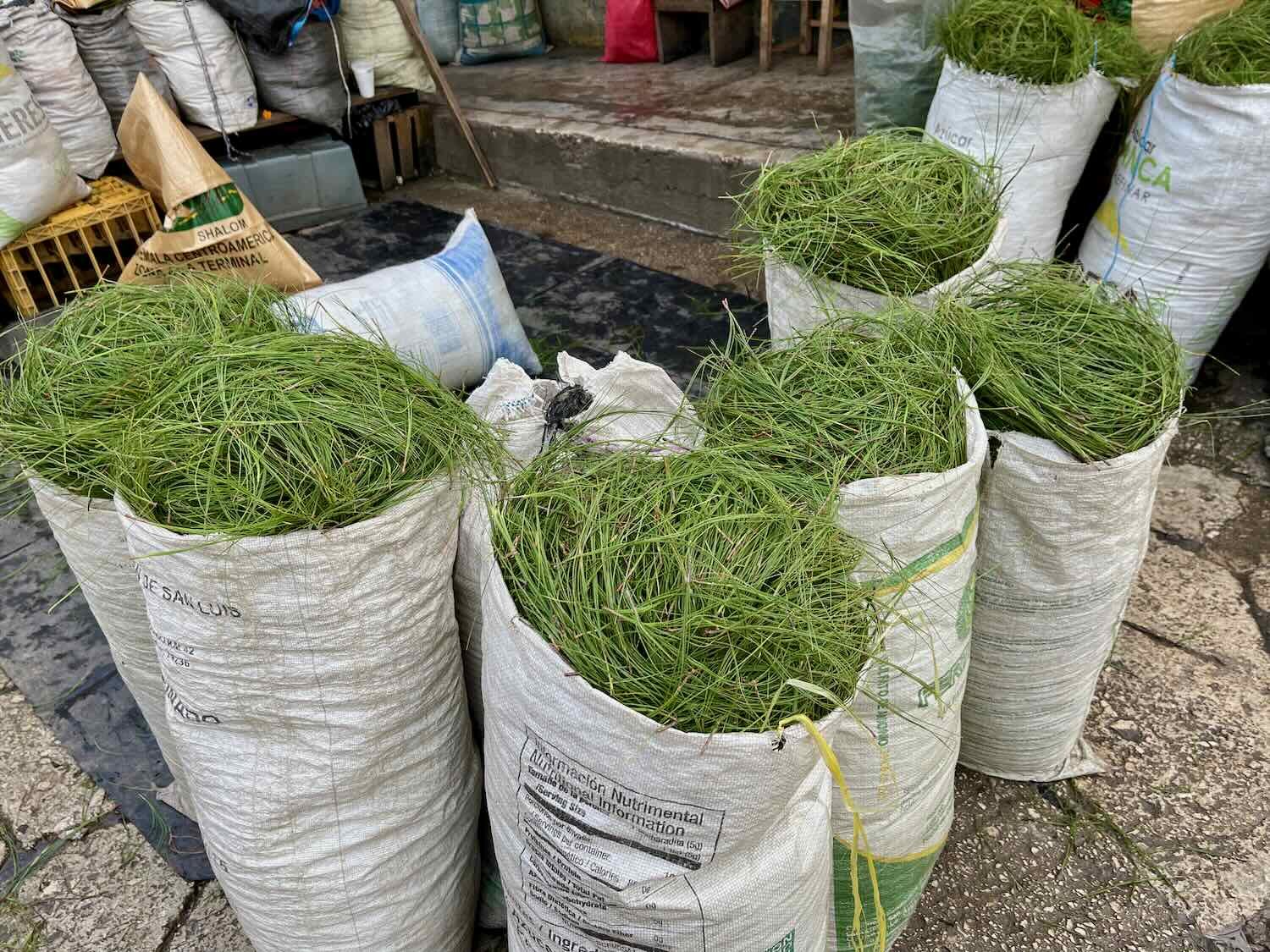
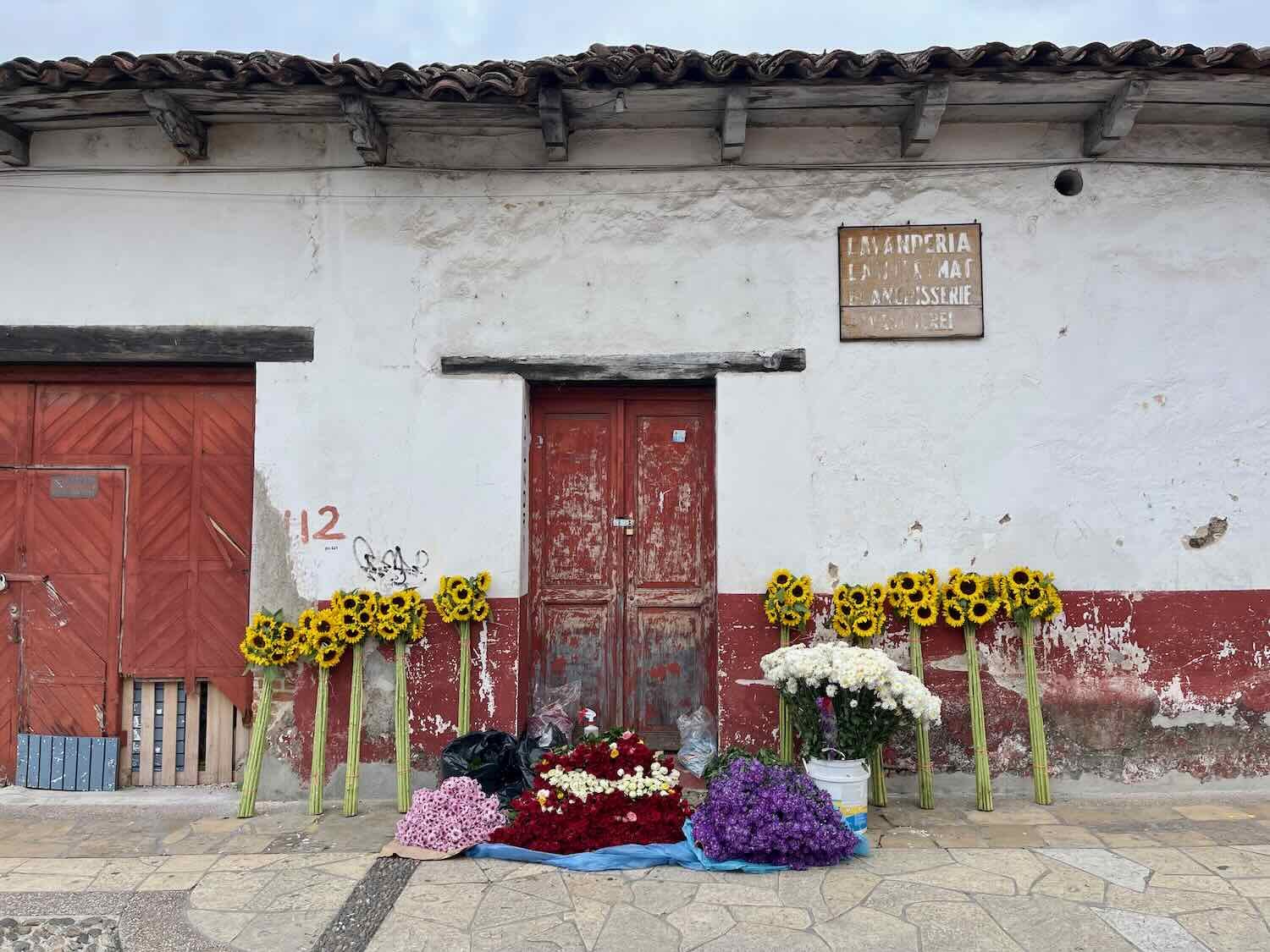
By this time it was mid-October. And one of the biggest holidays of the year in Mexico - the Day of the Dead - was just a couple of weeks away. Before long we were seeing lots of decorations being hung for the holiday, including traditional skull and skeleton motifs as well as a lot of black and orange colors influenced by the celebration of Halloween in the USA. But one of the most fascinating things we saw was an altar set up in a Burger King restaurant, with offerings for the deceased founders of the fast food chain. It had old black-and-white photos of the founders, candles, fresh fruit, and a few Burger King menu items (like fries and a soft drink).
An ofrenda (altar for the dead) set up inside a Burger King, with offerings for the deceased founders of the fast food chain. San Cristóbal de las Casas, State of Chiapas, Mexico. Copyright © 2019-2023 Pedals and Puffins.
Our location in Mexico just happened to position us close to the path of a full solar eclipse that occurred on the 14th of October. It had been a cloudy morning, and we didn’t expect to see much. But around 11am we noticed a bright spot on the floor of the cafe where we were sitting. A tiny hole in the sheet metal roof was acting as a pinhole camera, and allowed us to watch the eclipse unfold on the floor right next to our table. San Cristóbal de las Casas, State of Chiapas, Mexico. Copyright © 2019-2023 Pedals and Puffins.
Overall we thoroughly enjoyed our time in San Cristóbal de las Casas, and we now count it among one of our favorite cities we’ve visited. It’s a lovely town - not quite as opulent or grand as the mining towns of northern Mexico, but even more charming in some ways. The relatively modest churches and the not-fully-restored facades of the historic buildings gave the city a more lived-in and authentic feel. Many people - especially the women - still wore traditional Mayan clothes. And the markets were full of people speaking Tzotzil and Tzeltal, giving the city a cultural depth that went beyond the colonial emphasis of most Pueblos Mágicos. We’ll end this post with a few more of our favorite photos, that evoke the complex spirit of this mountain city.
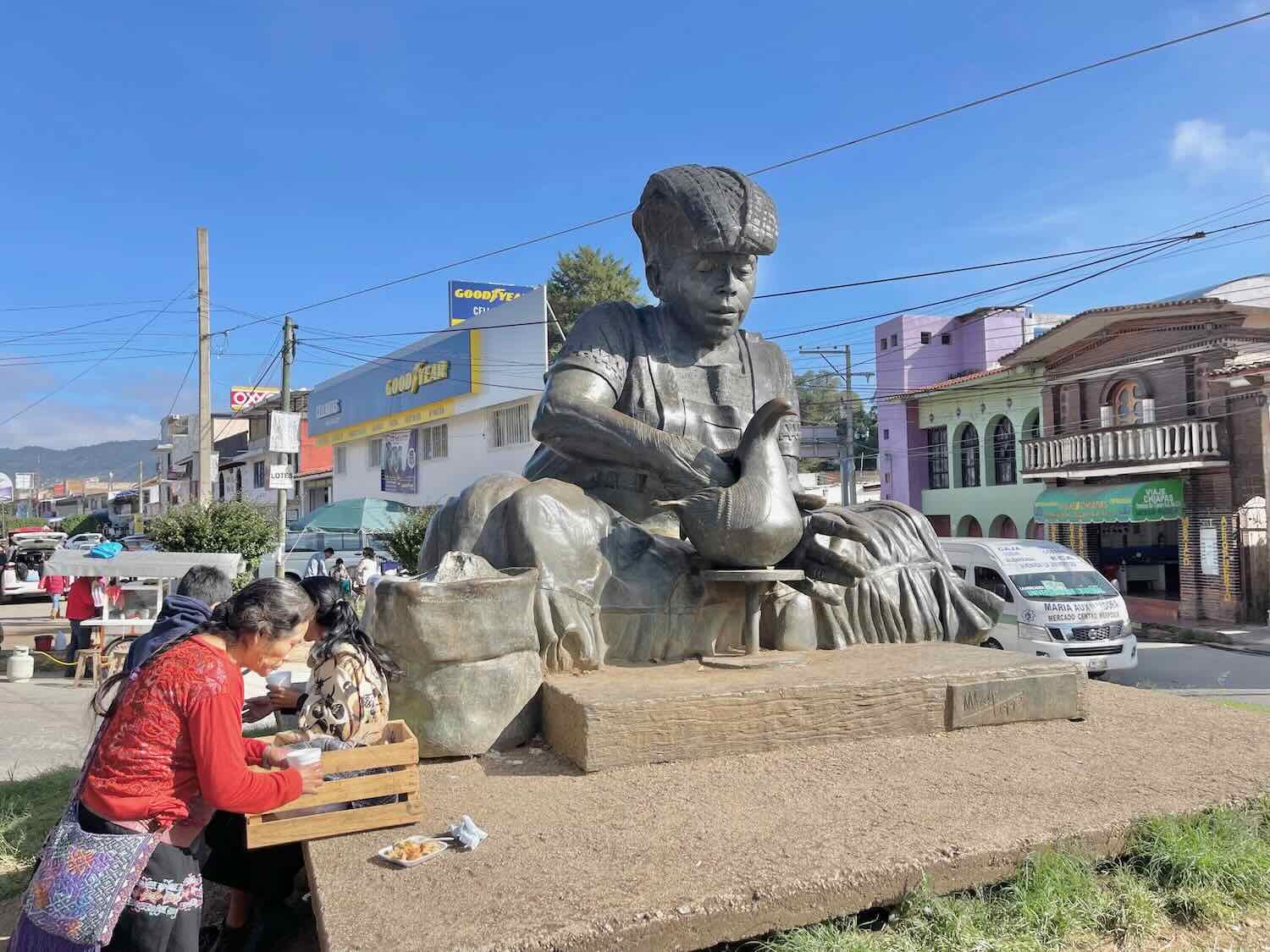
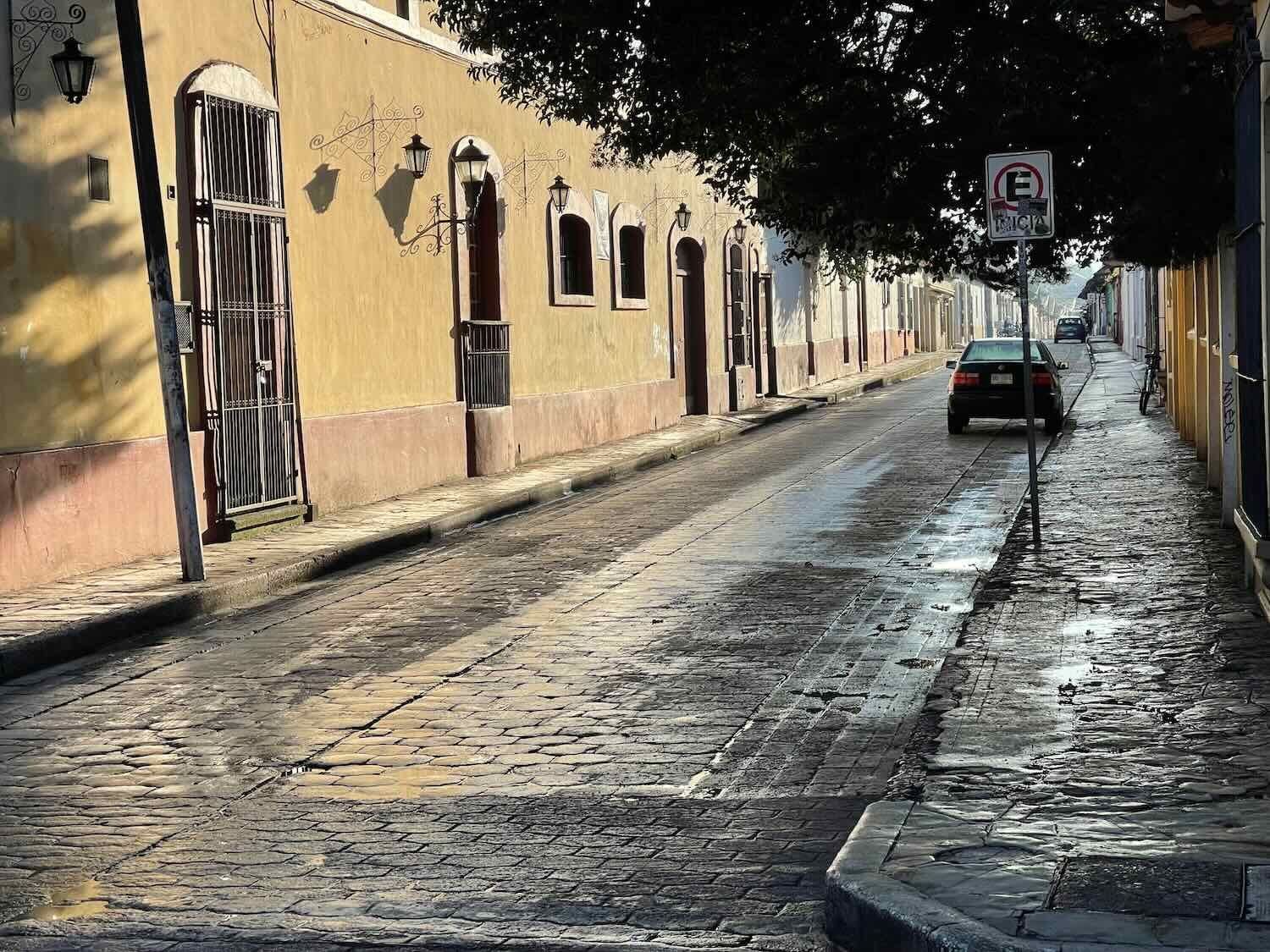
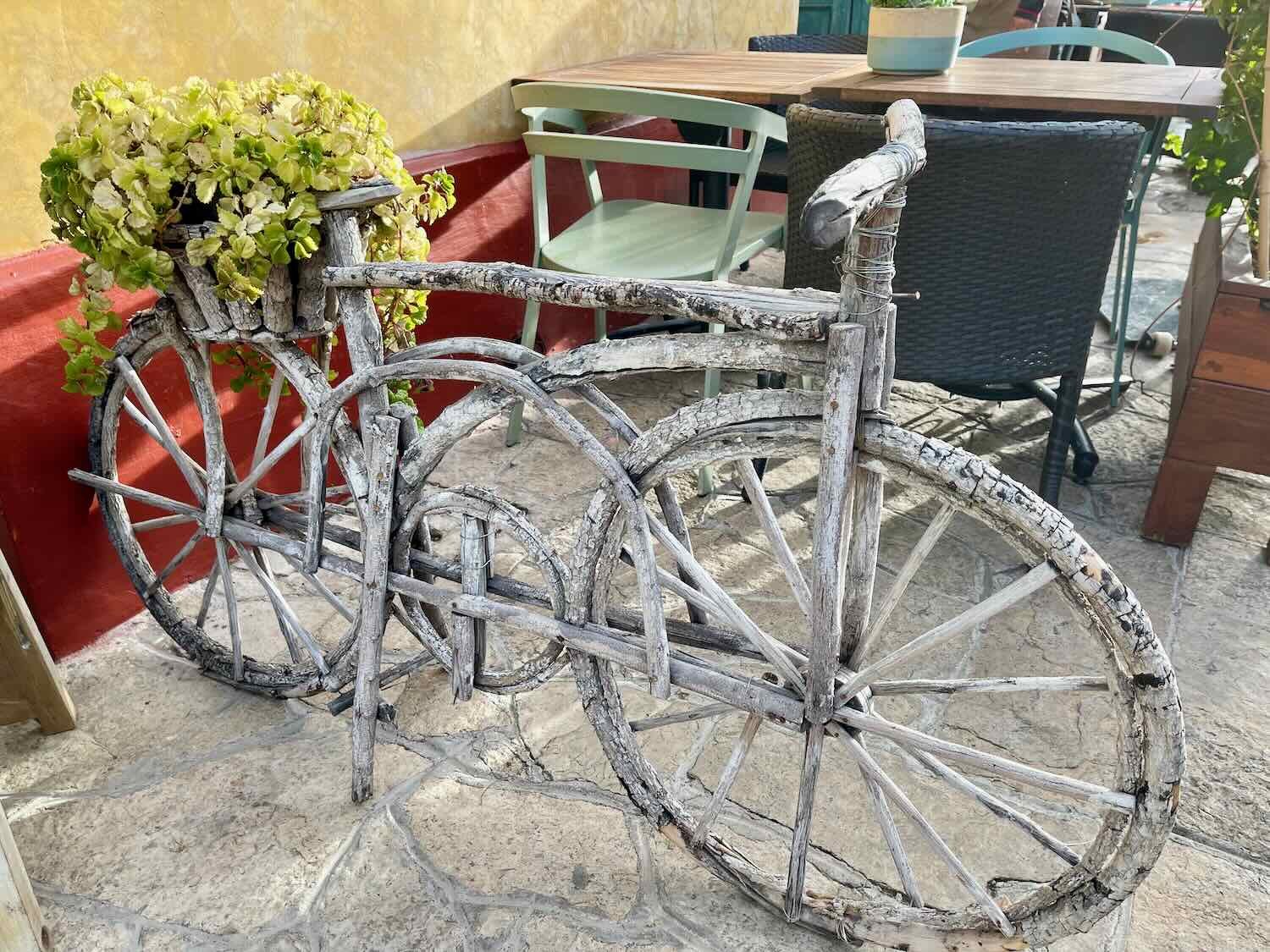

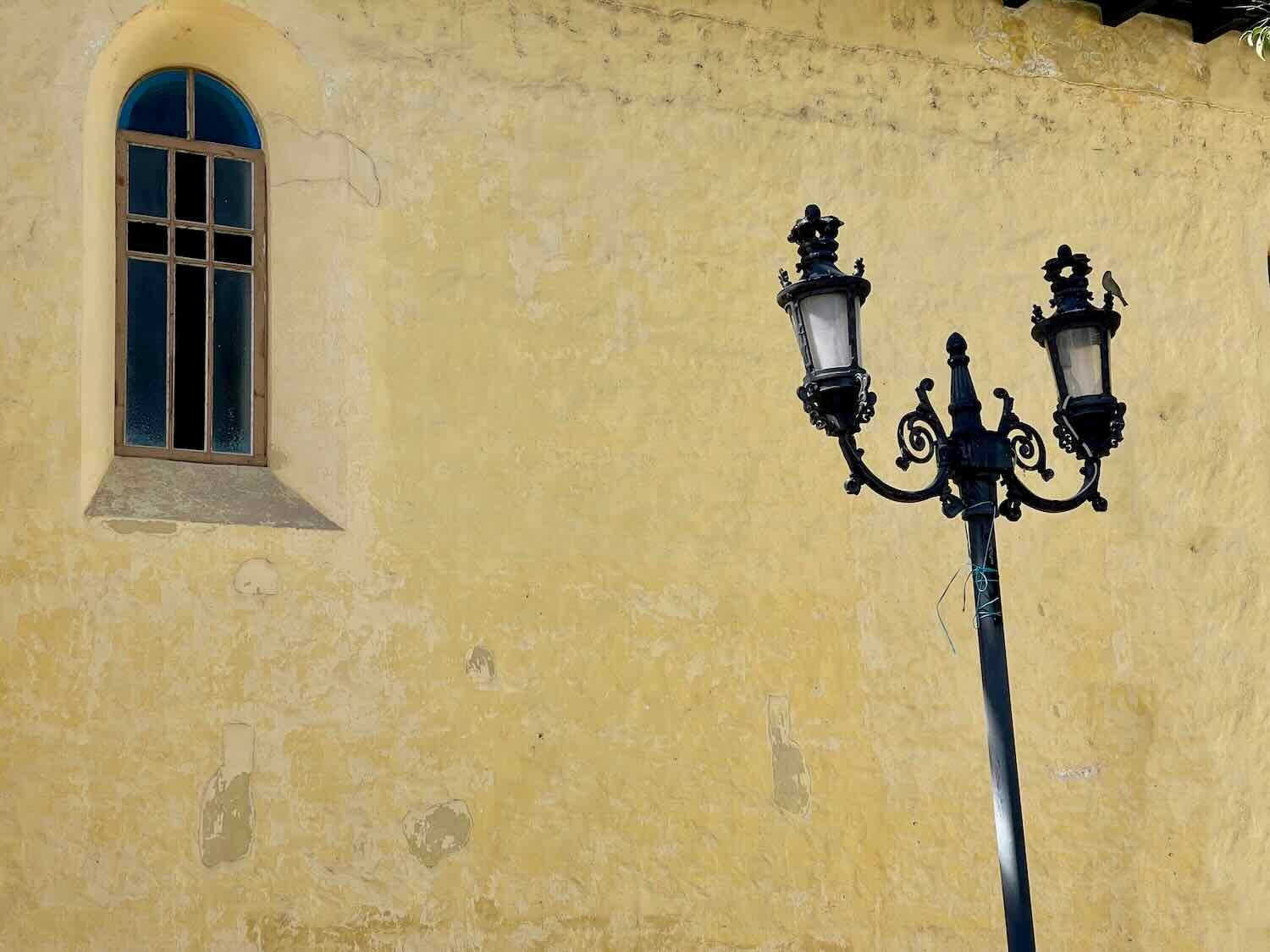

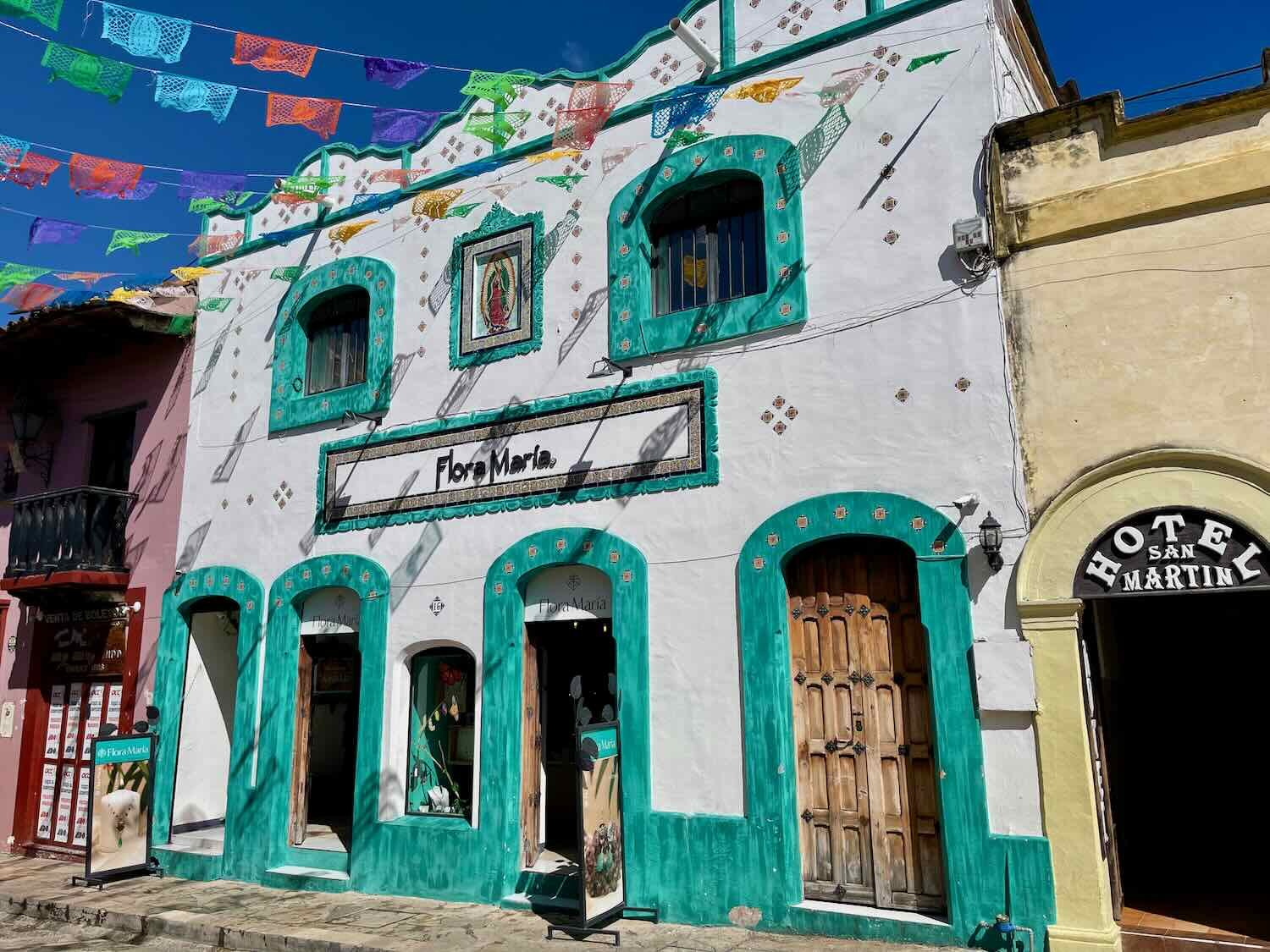
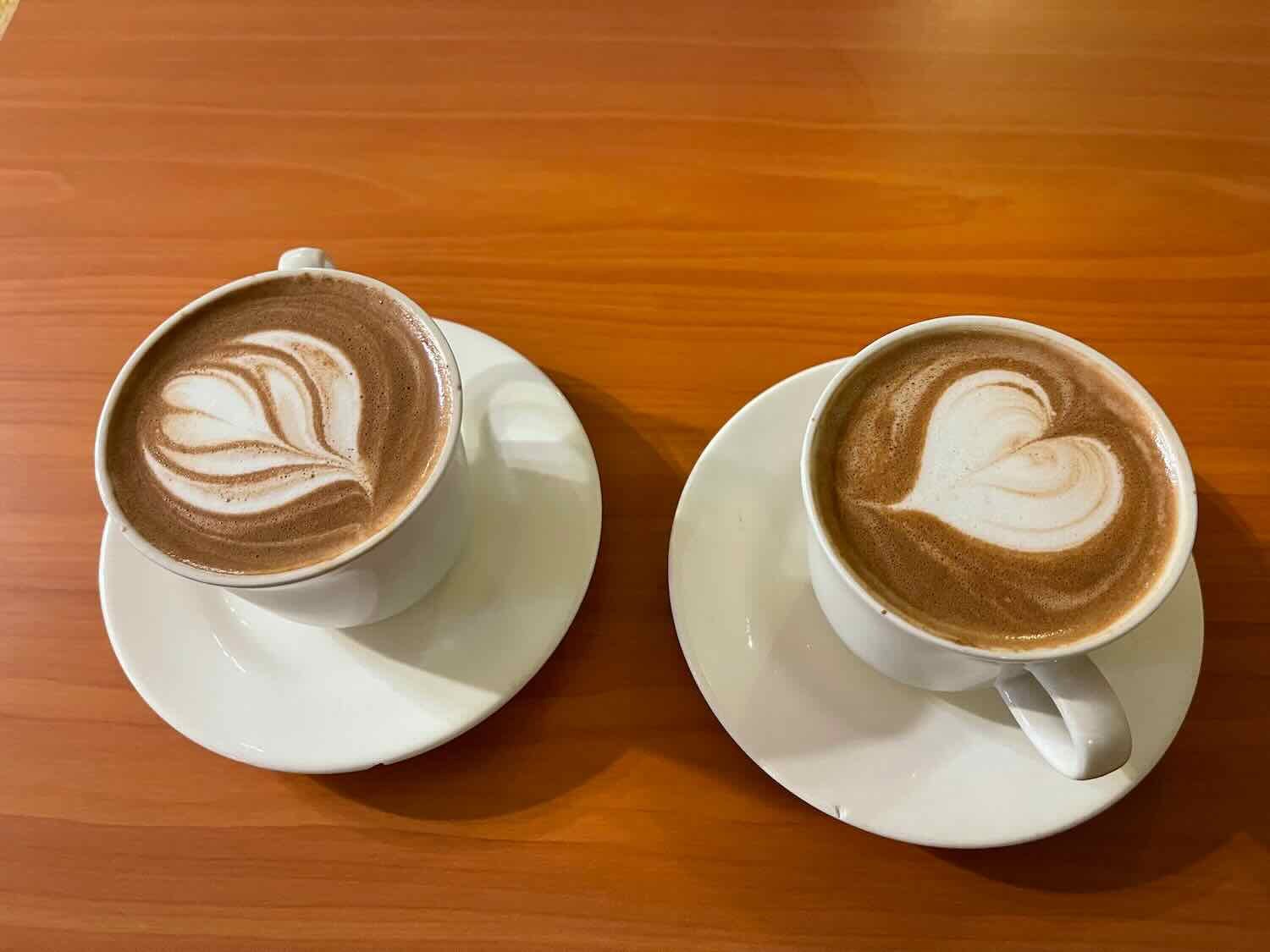

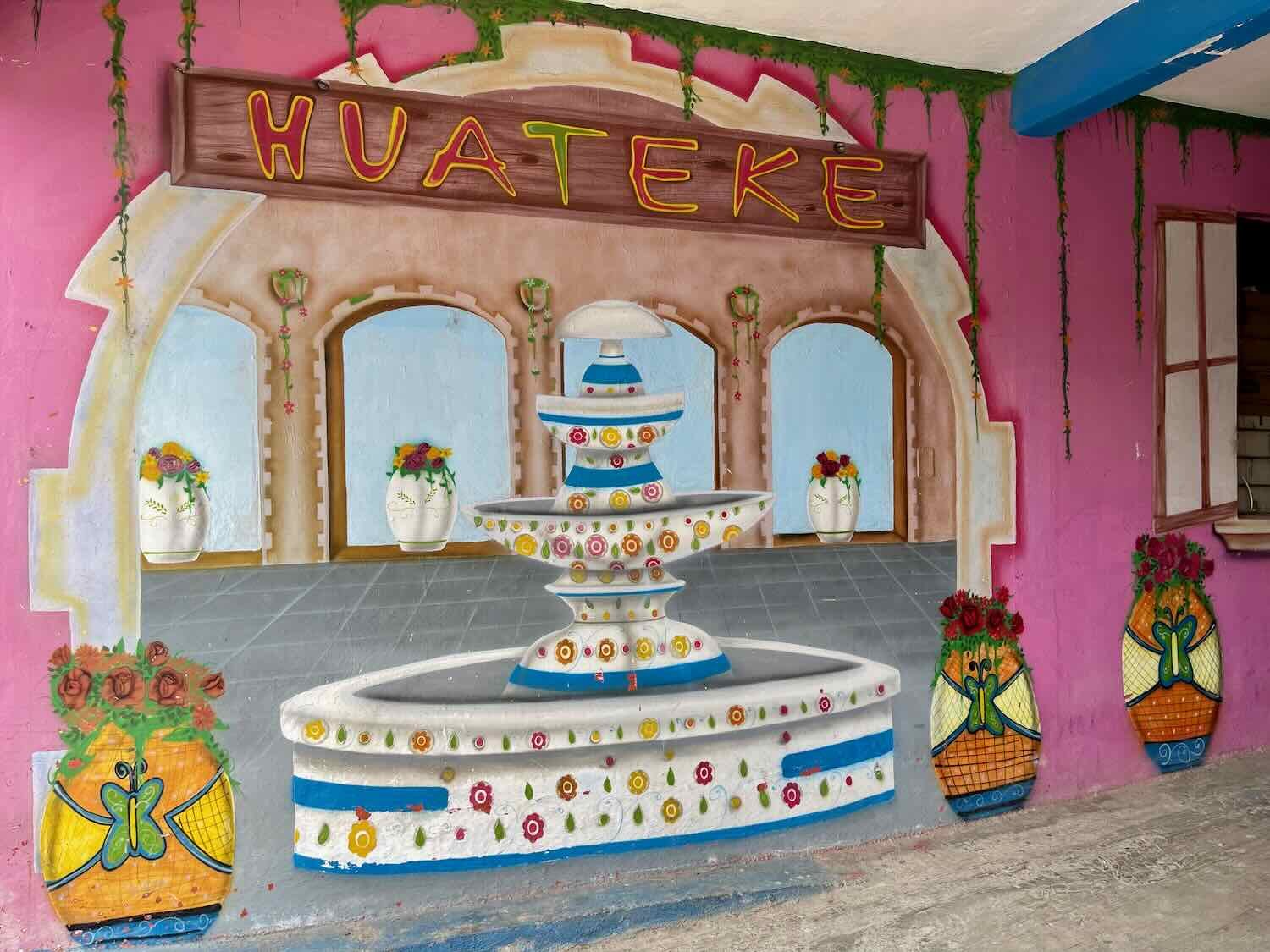

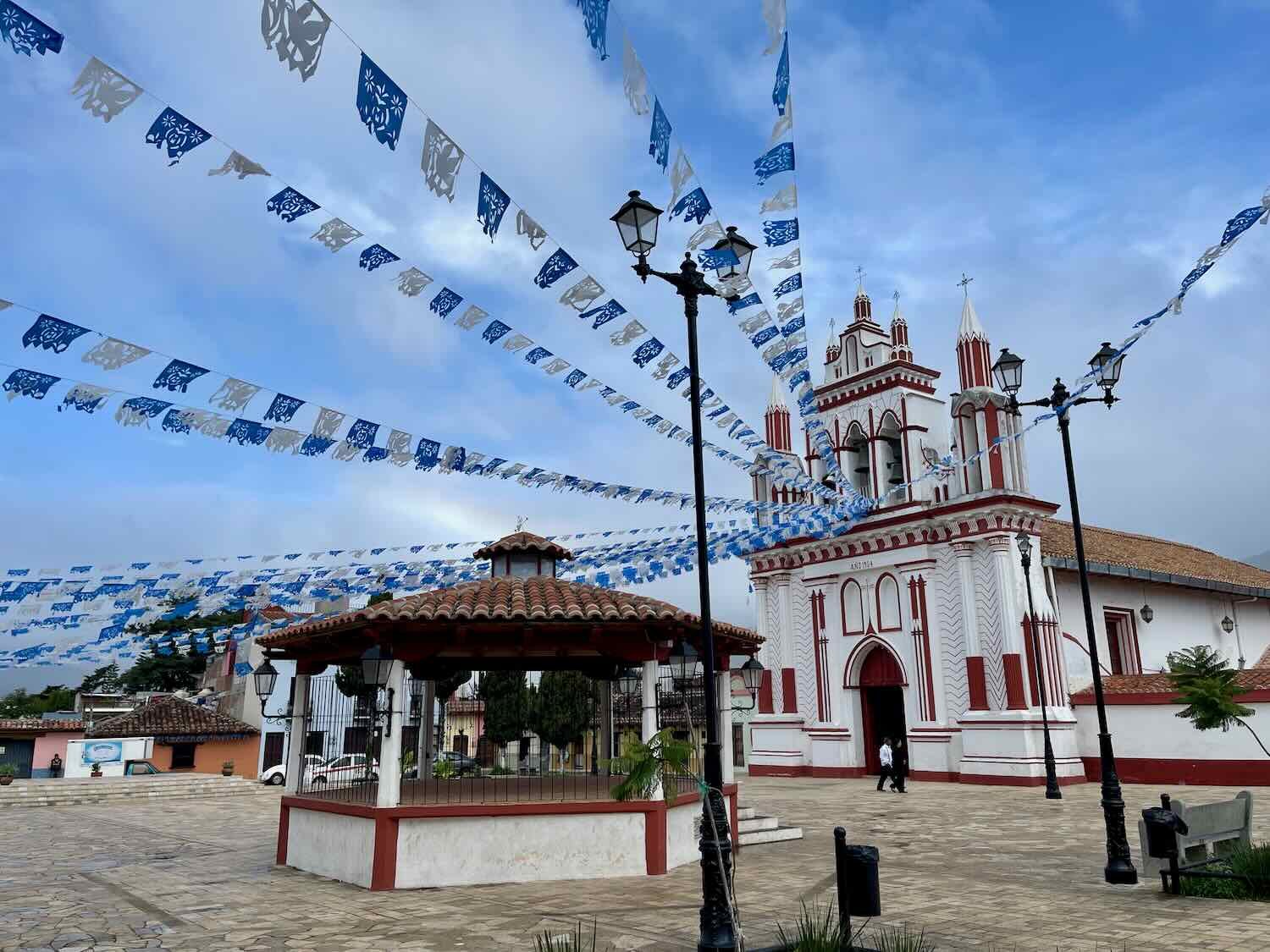
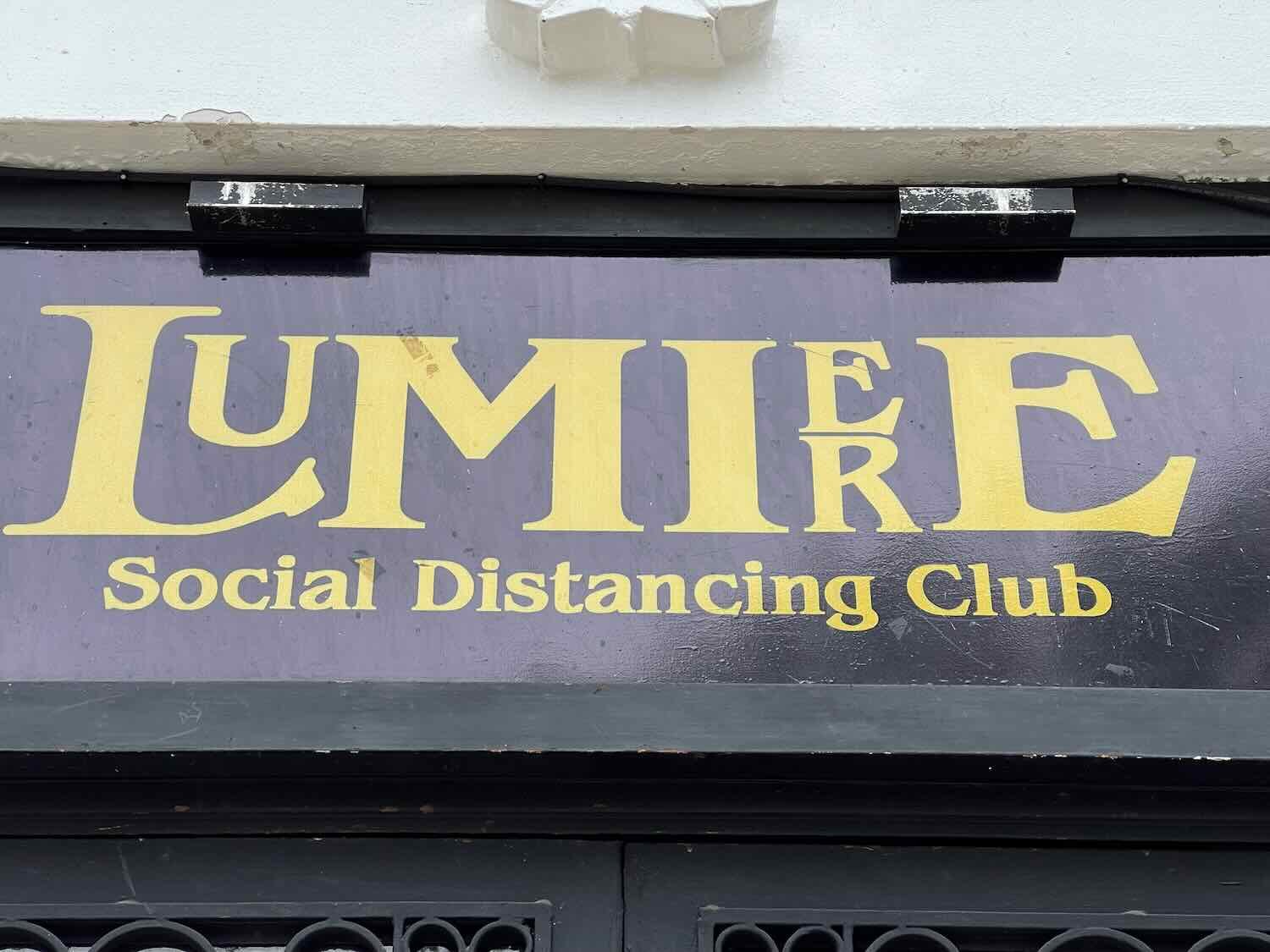
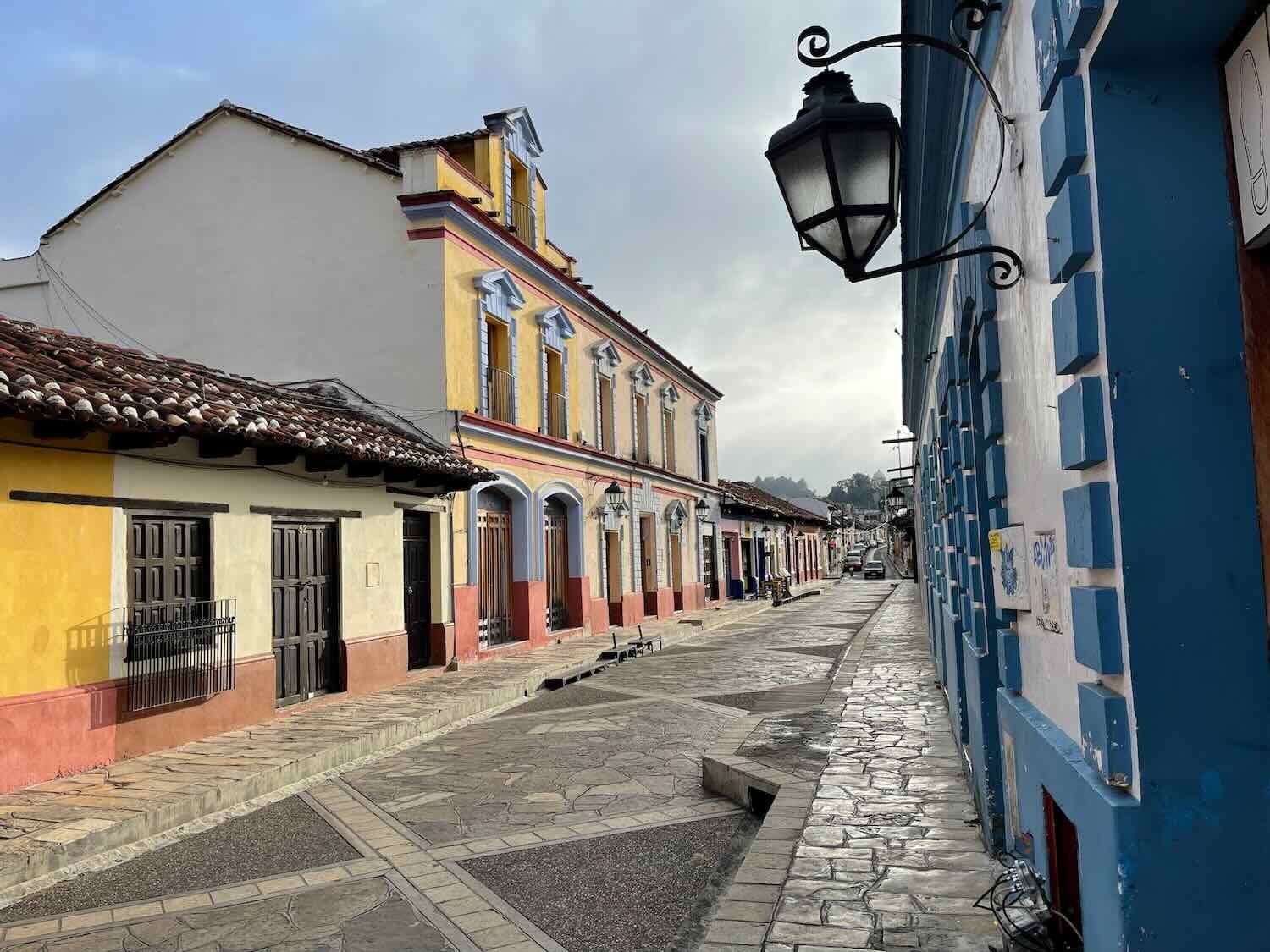
One final stroll down a quiet, pedestrian street. San Cristóbal de las Casas, State of Chiapas, Mexico. Copyright © 2019-2023 Pedals and Puffins.
